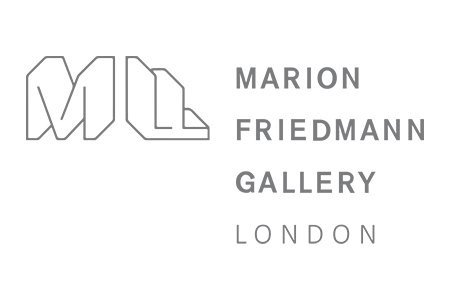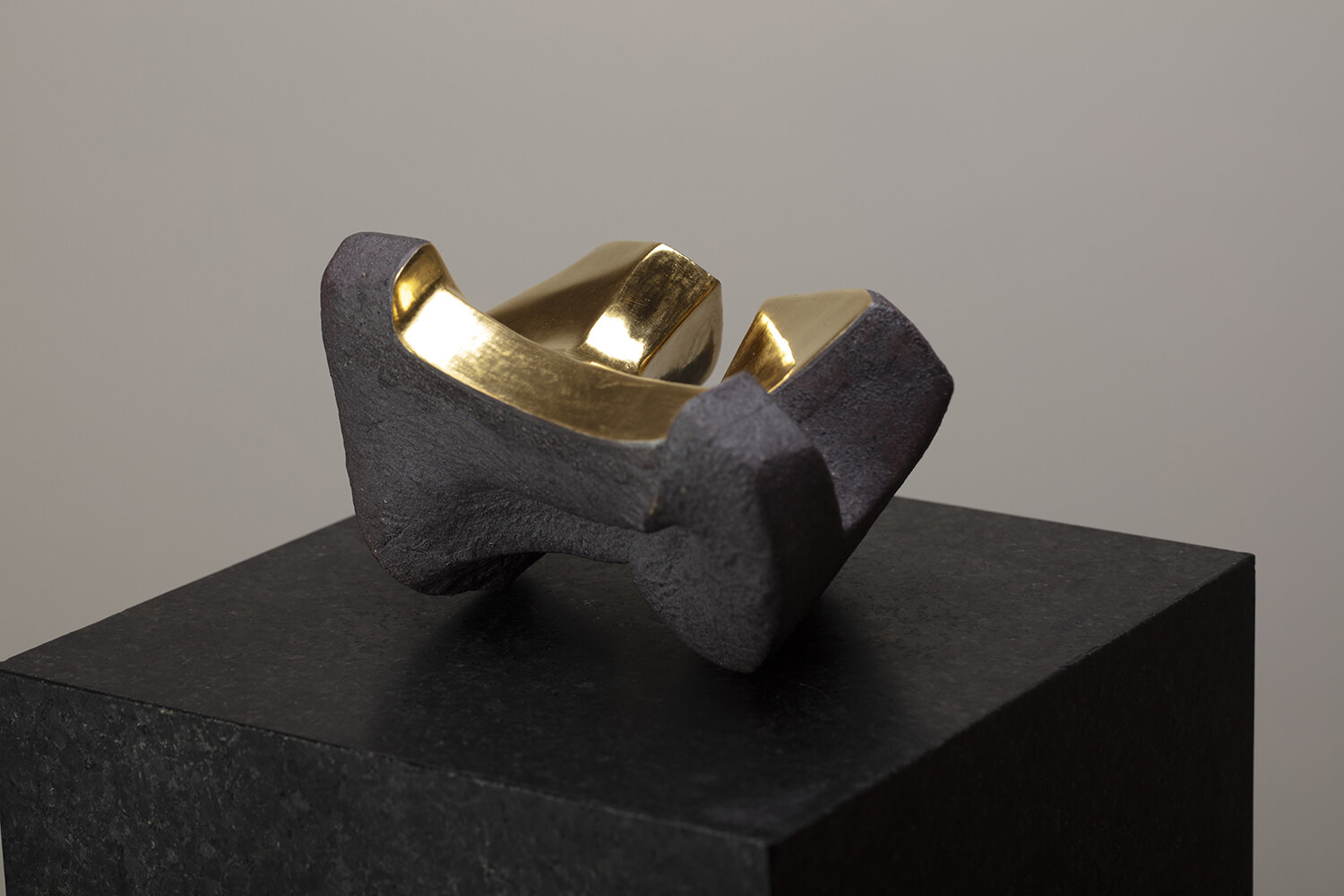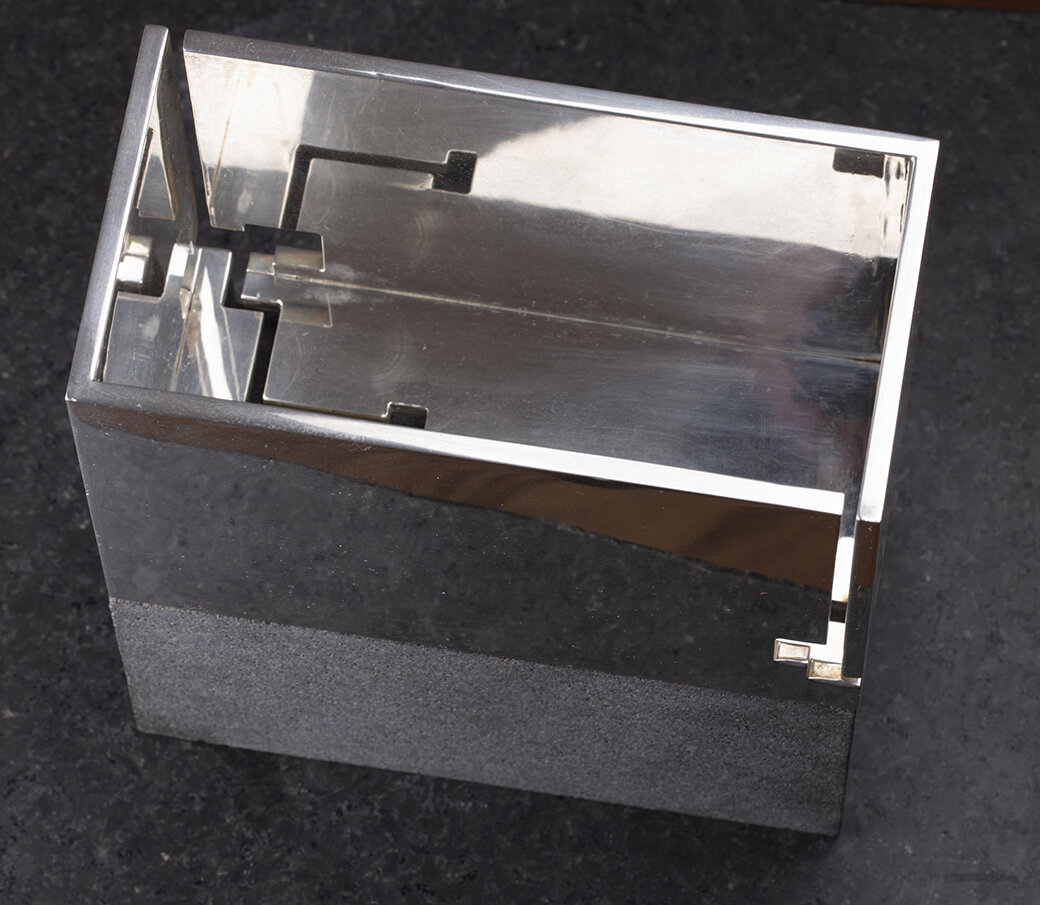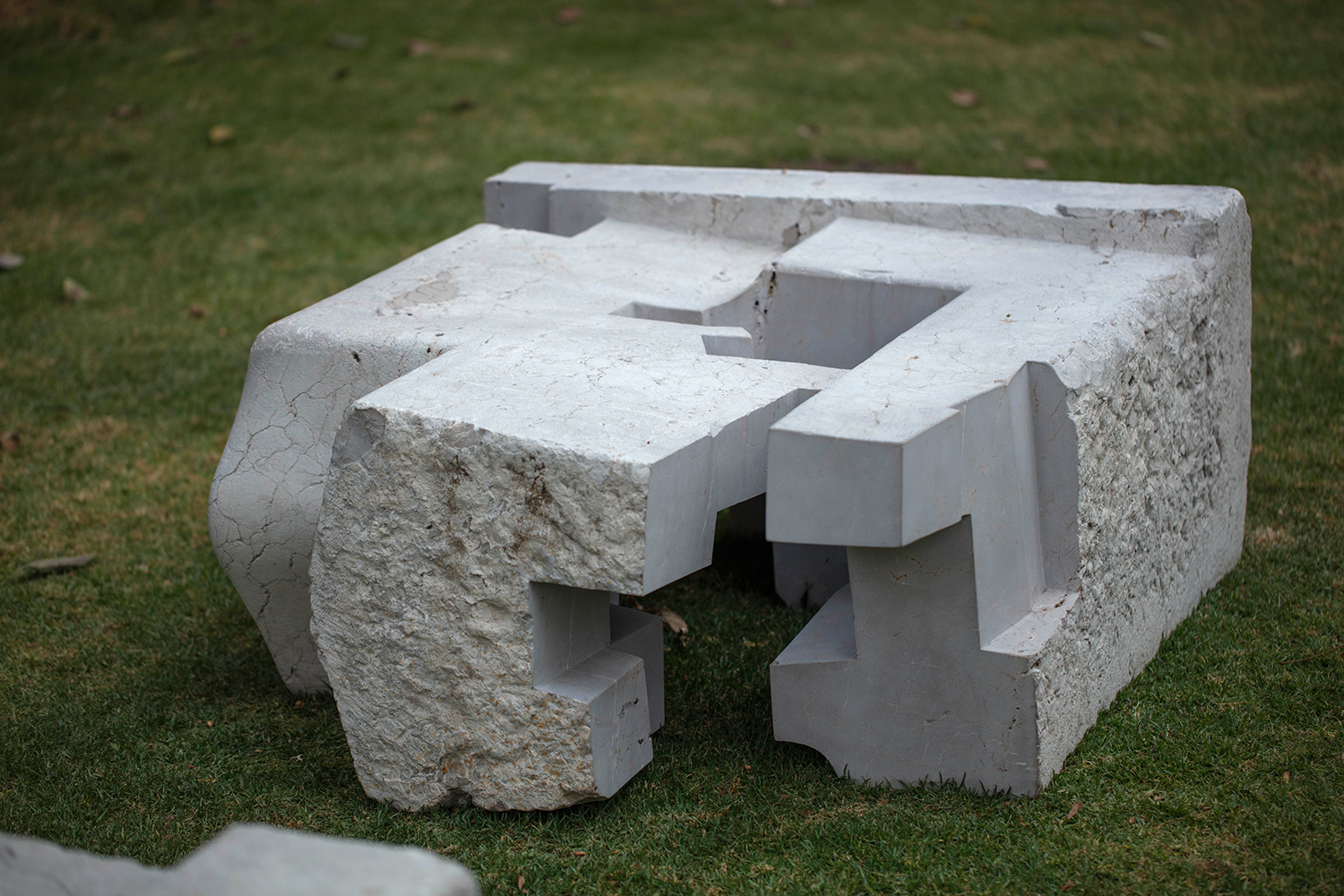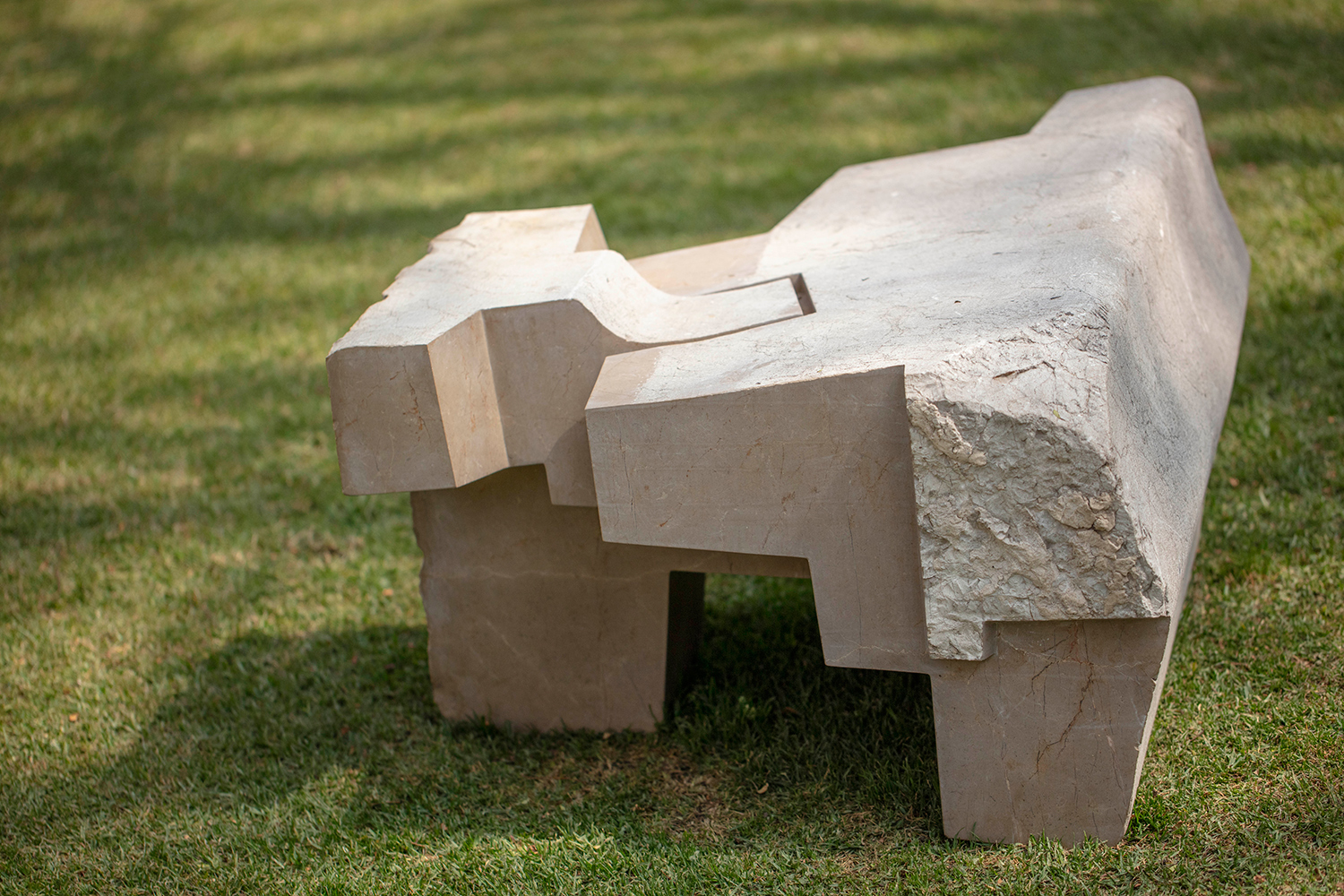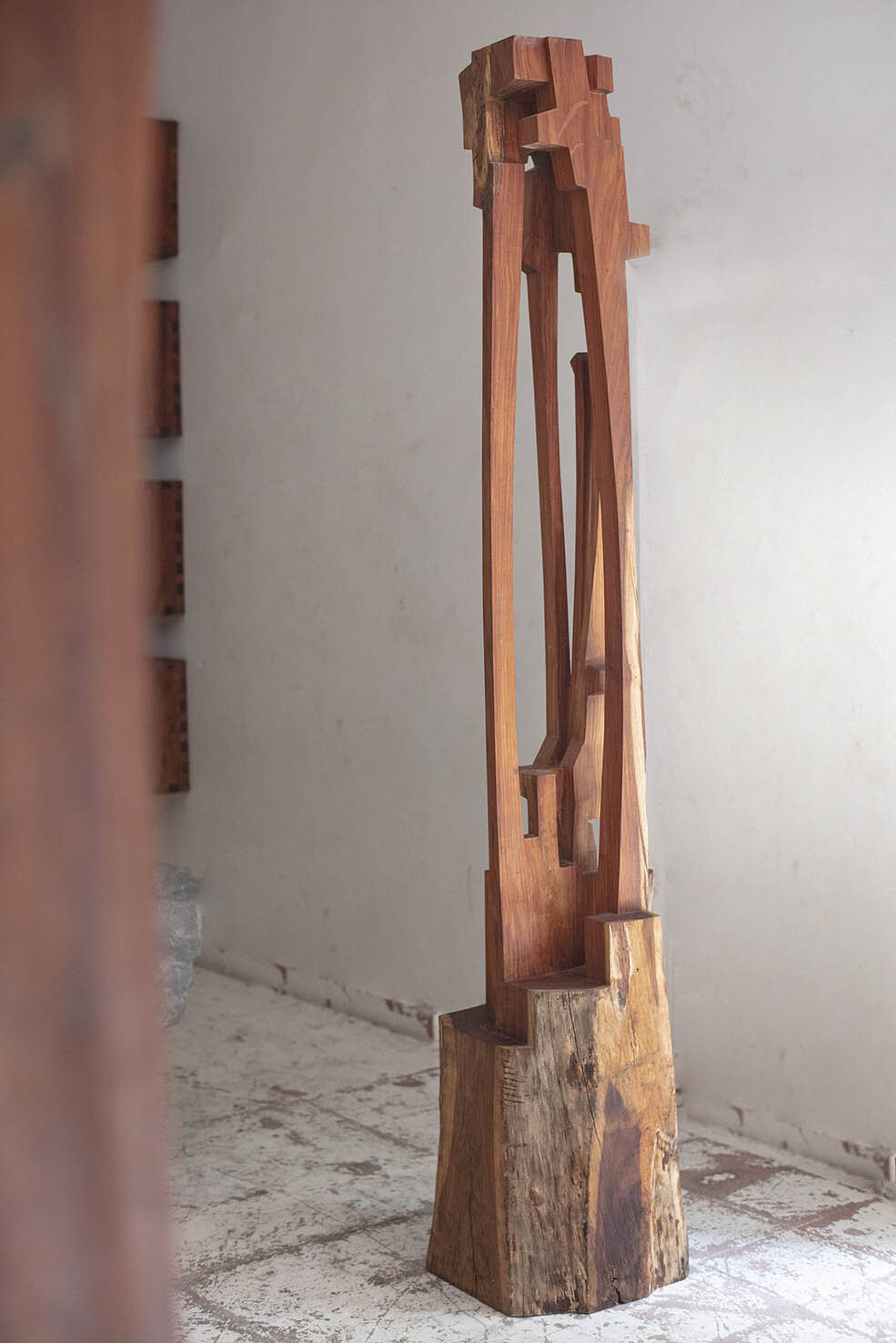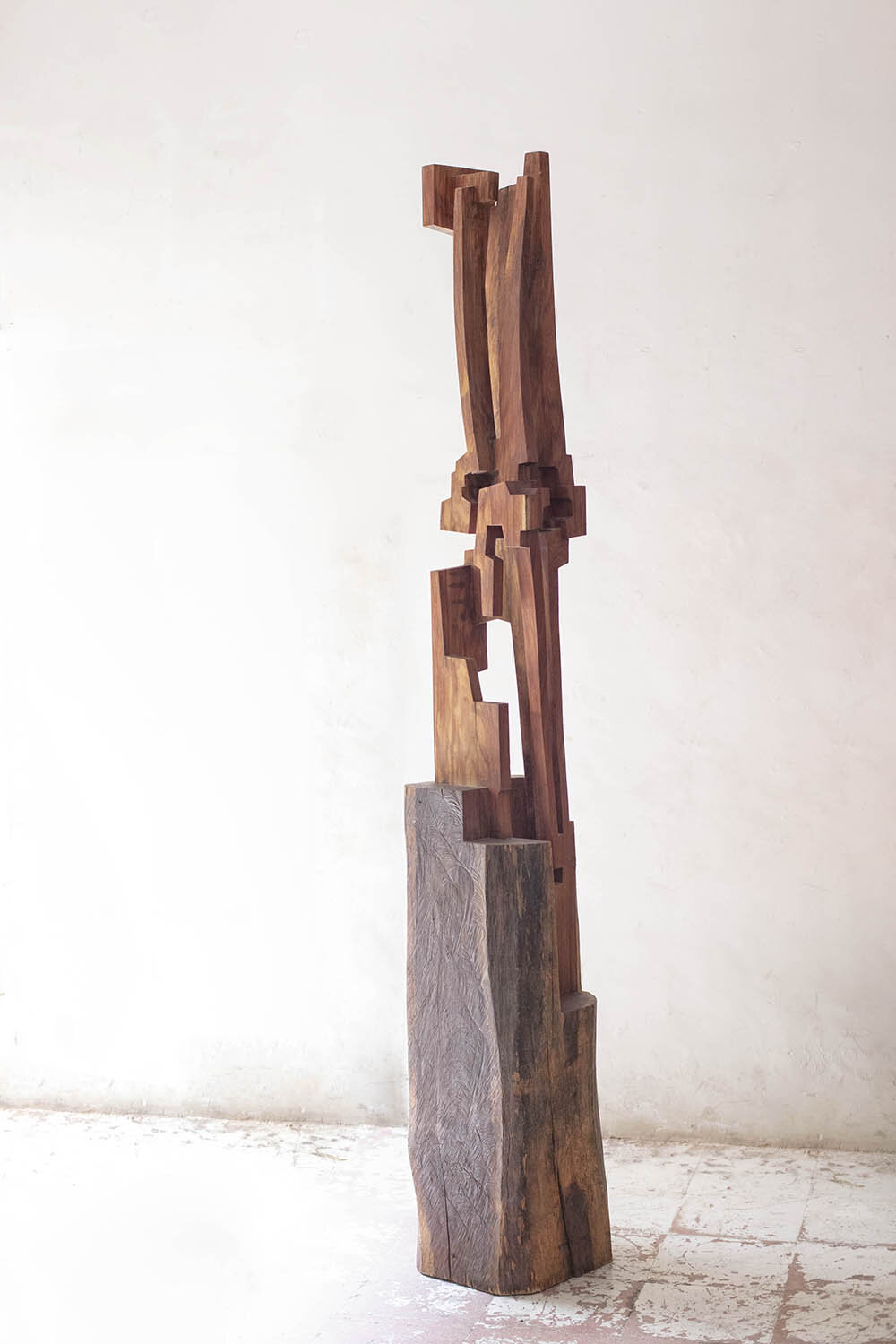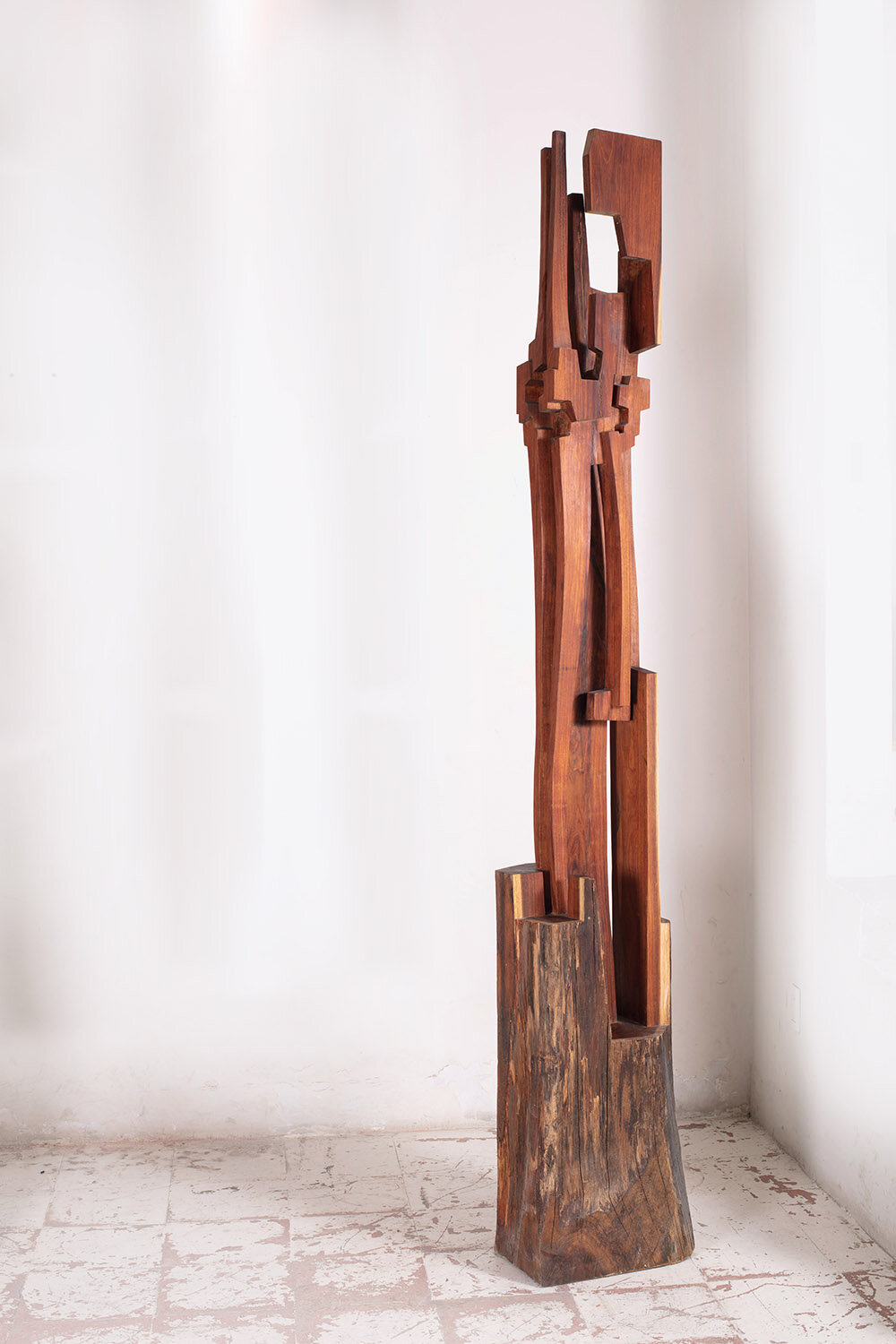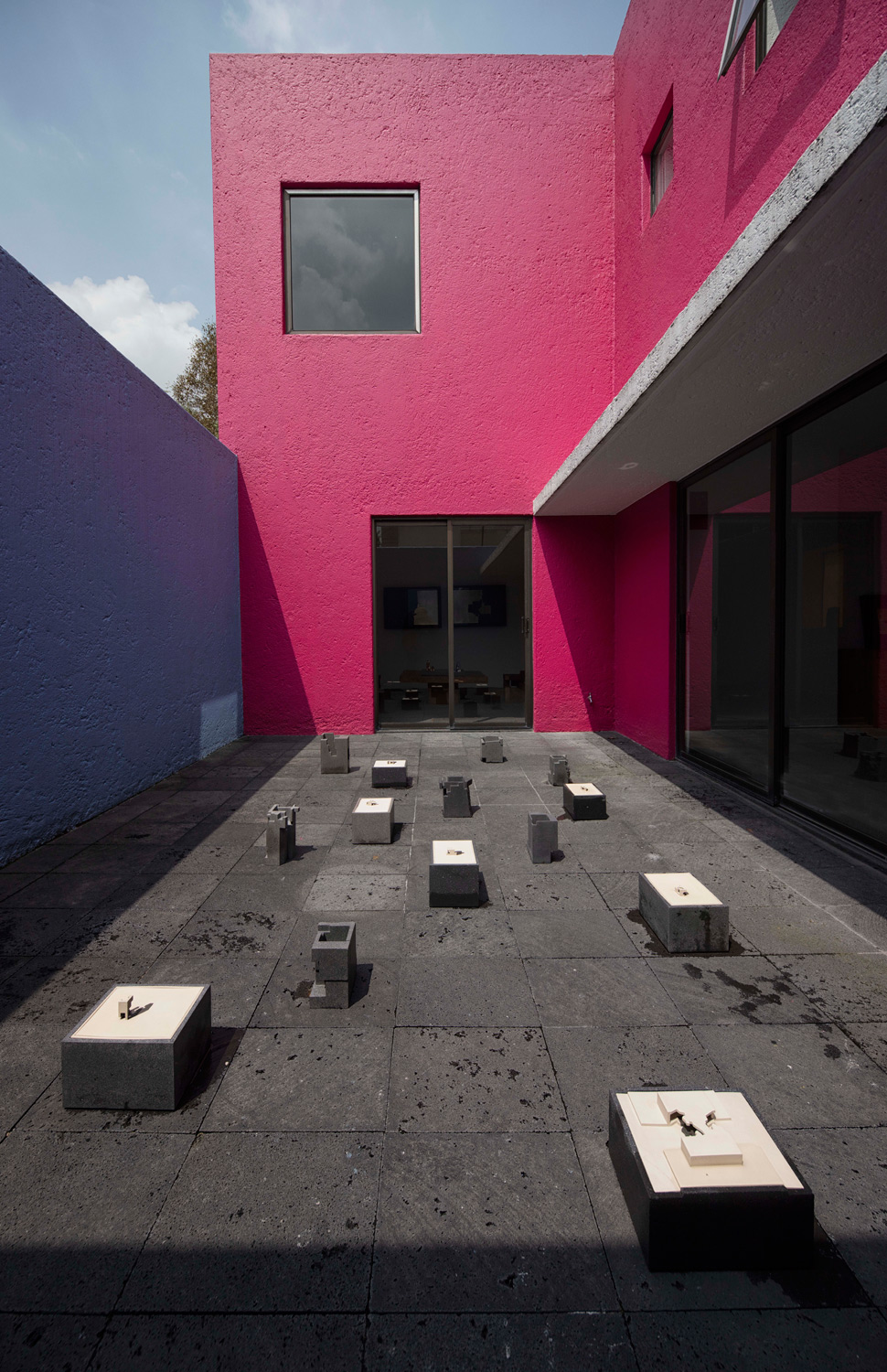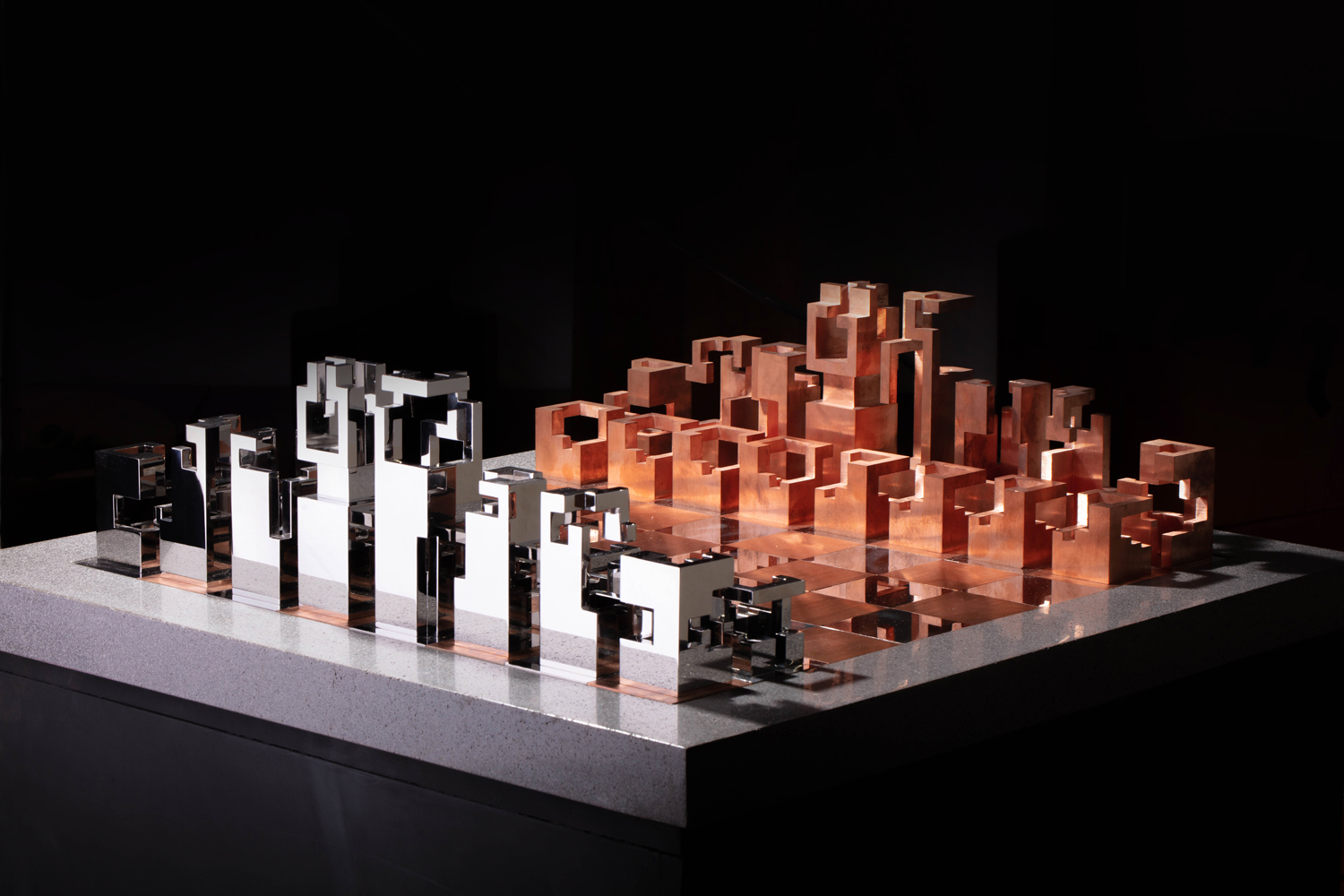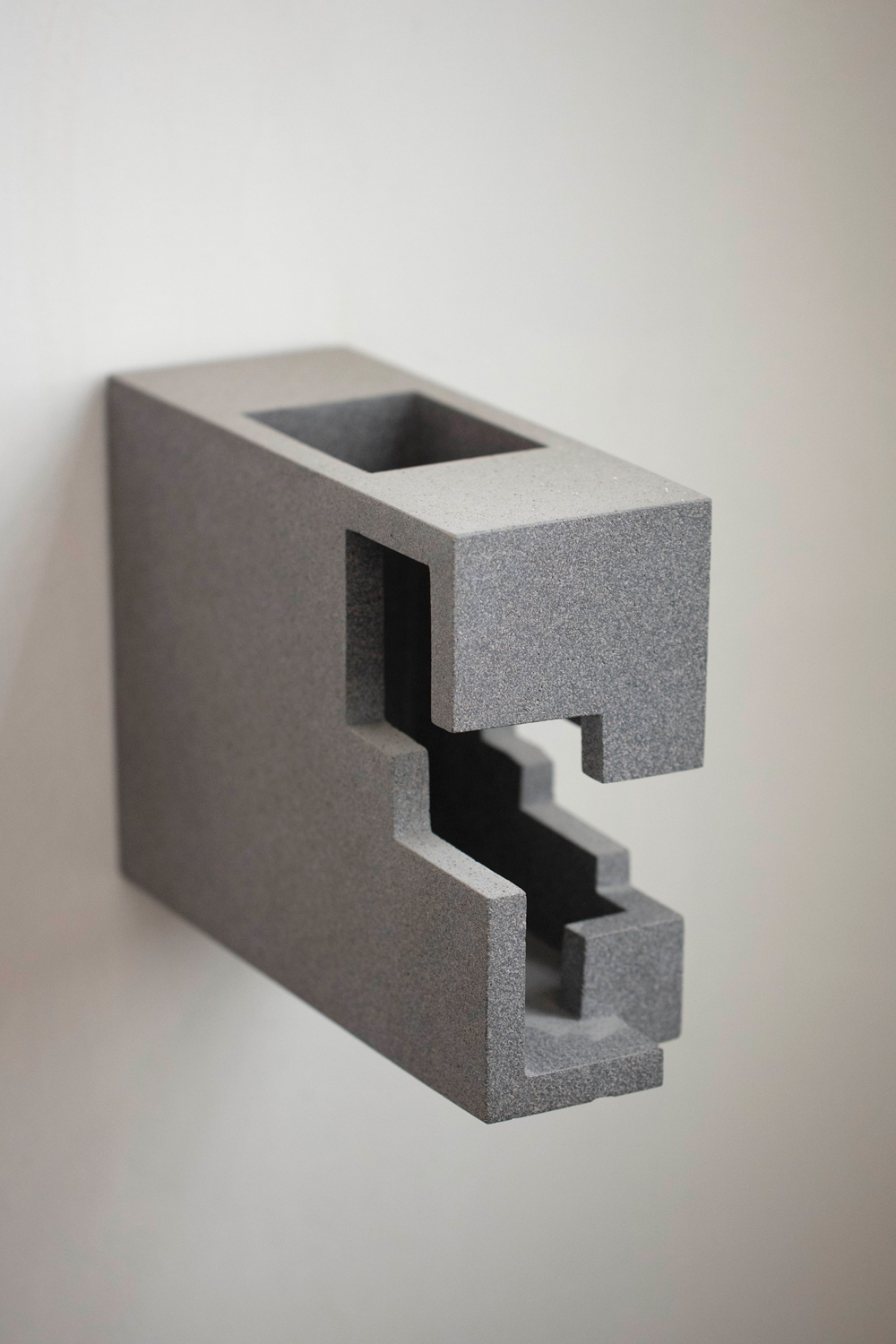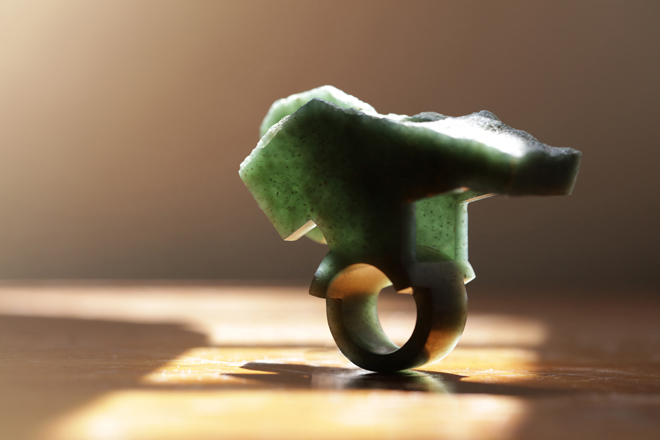JORGE YÁZPIk
JORGE YÁZPIK, portrait, at his studio-workshop
ABOUT
Jorge Yázpik is one of the most renowned contemporary Méxican artists (born México City, 1955). He works in large and small scale abstract sculpture with a wide range of precious and semi-precious stones. Yázpik approaches stone and raw materials with high respect to their natural qualities, opportunities, and limitations. Often Jade and Obsidian for example are presented in an unpolished glory, displaying their crystal appeal through carefully placed cuts. Every discourse with the material happens - in Yázpik’s own words - by “clearing the path”, making space for the accidental element. He incorporates a strong architectural design language within his oeuvre. Yázpik was mentored by Mexican ‘Ruptura’ artist Manuel Felguerez, a pioneer in Méxican Geometrism. Yázpik explores the negative space and takes references to Pre-Columbian sculpture with a volumetric and spatial language. He carves into the material to create labyrinthine negative spaces, with precise geometric landscapes, contrasting the organic outer surfaces of the stones. He engages the viewer visually, tactually, spatially, and architecturally. Most of his works stay untitled.
Set of three sculptures in solid clay and gold leaf: carved, approx: 15 x 15 x 16.5 cm/piece, unique pieces. Available as a set or individually.
Volcanic stone and silver, carved, 17.5 x 16.5 x 8 cm, unique piece.
MEDIUM & LARGE SCALE SCULPTURE
Materials: Jade, Marble, Granite, Volcanic stone, Obsidian, Wood, Silver, Bronze & more
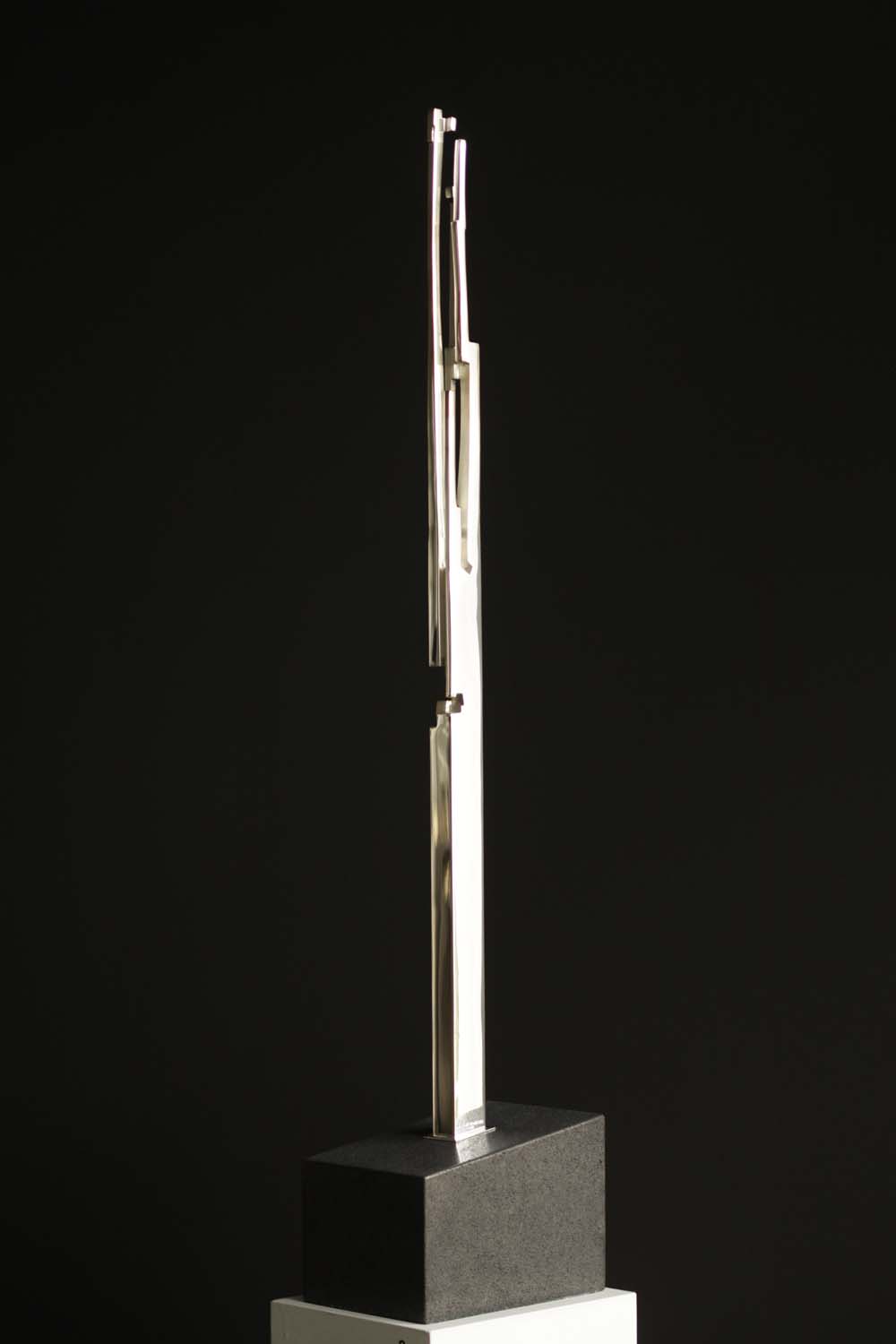
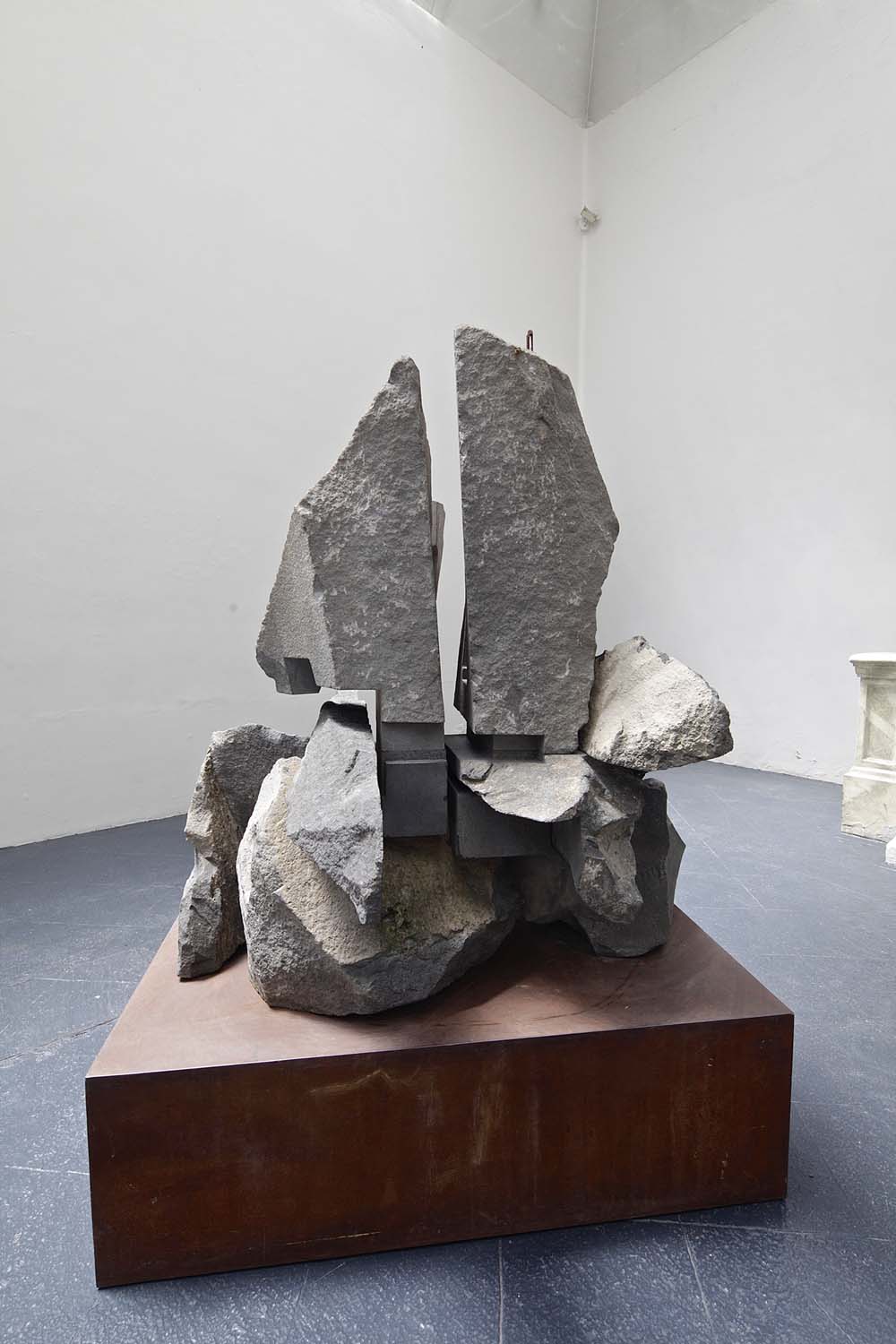
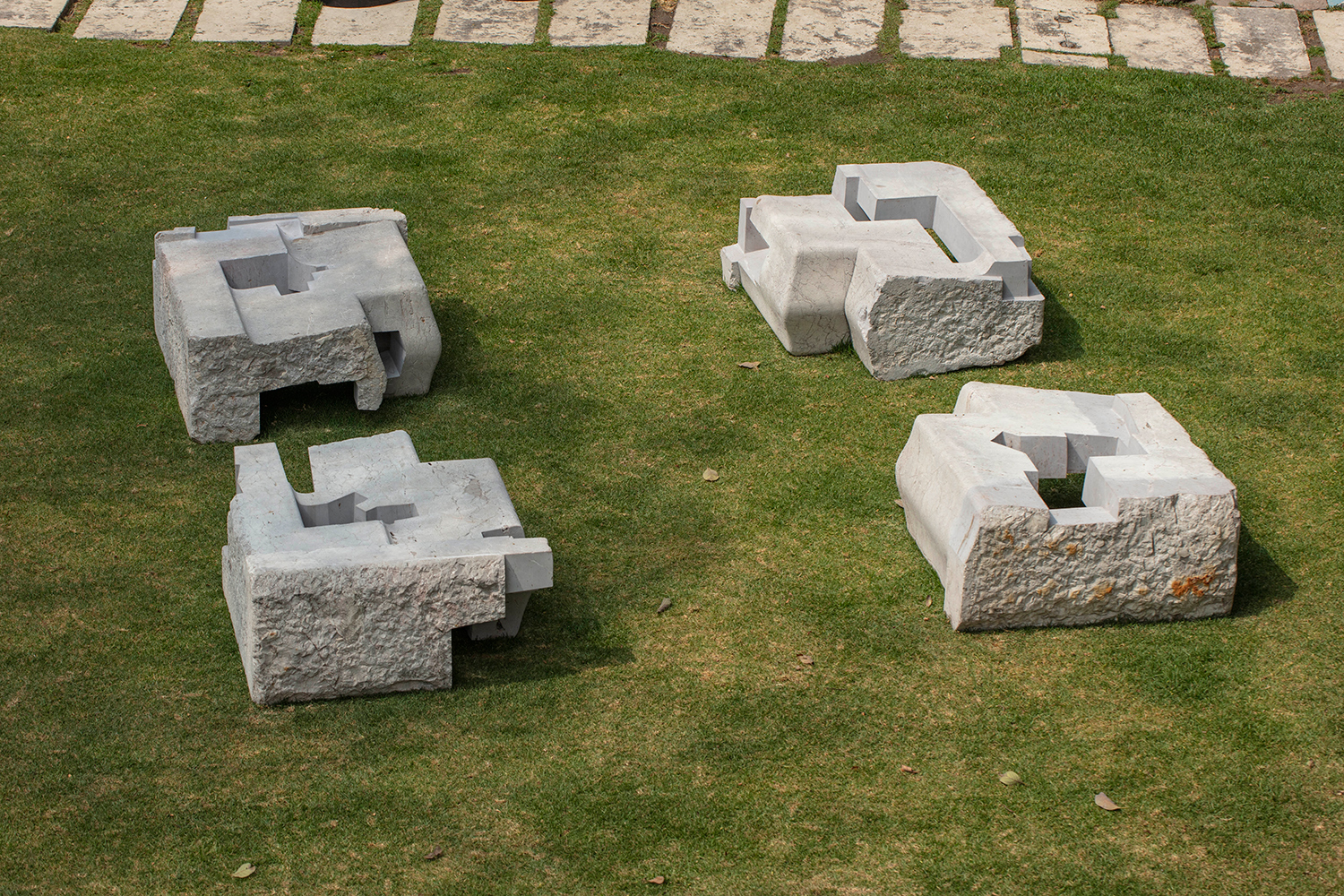
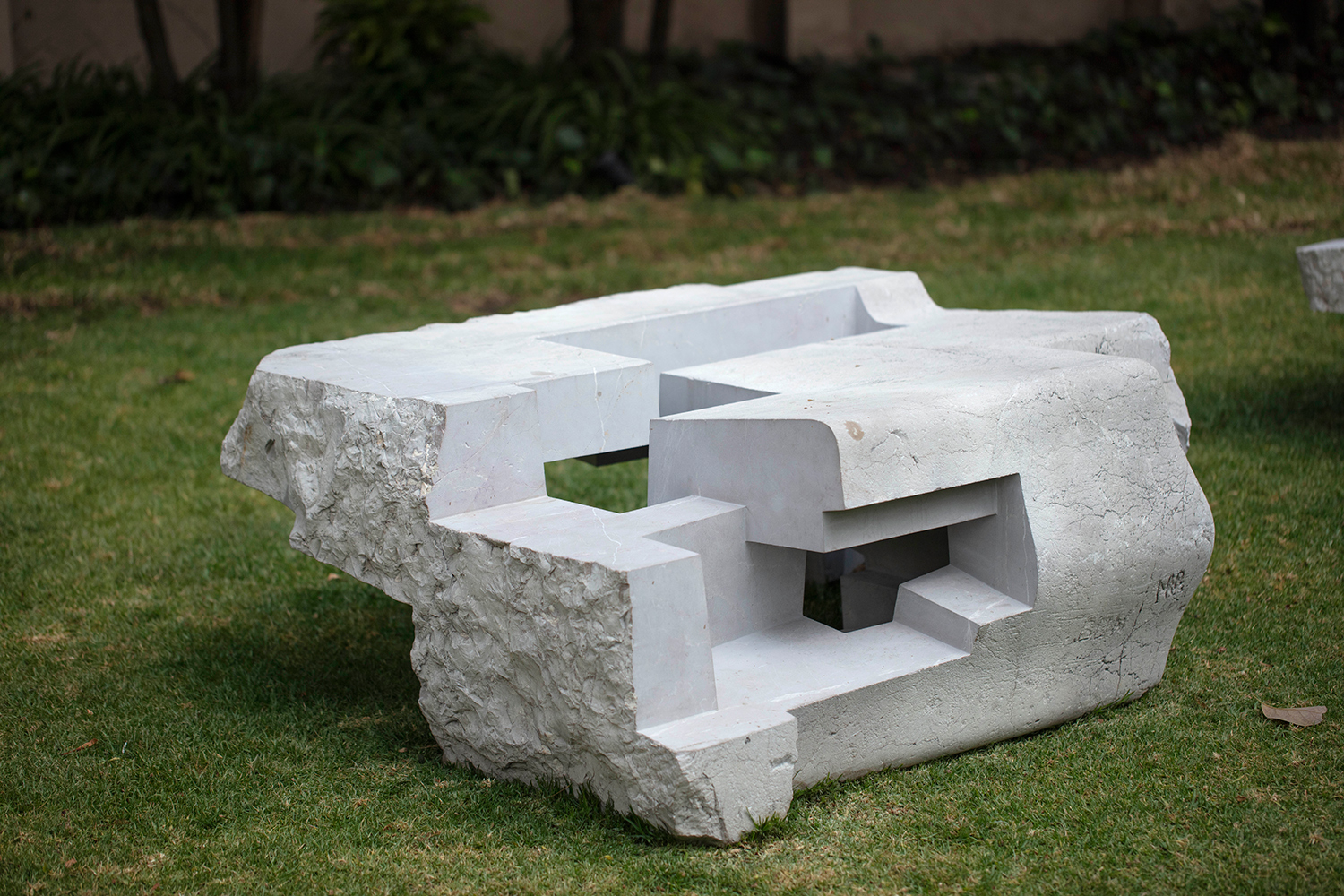
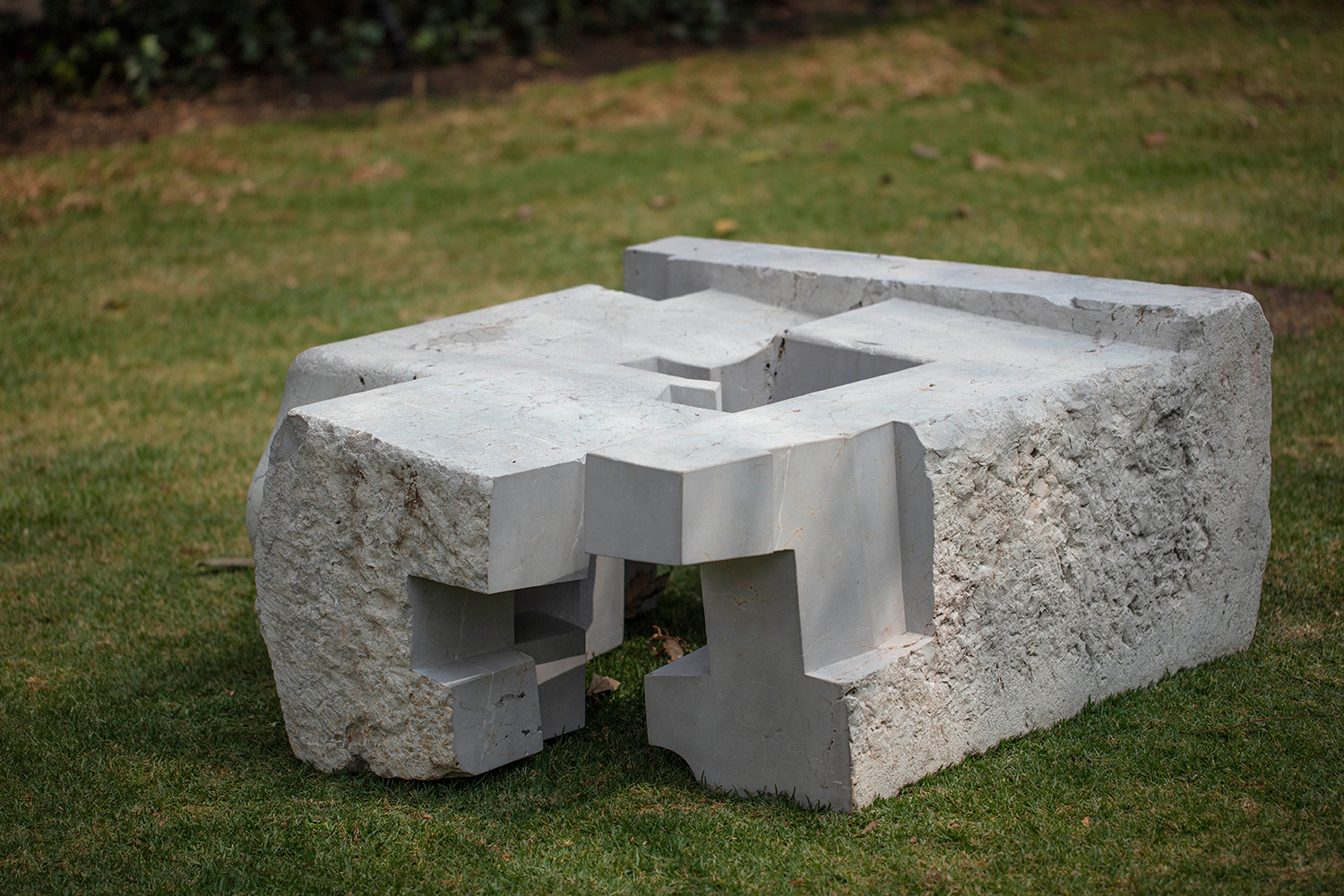
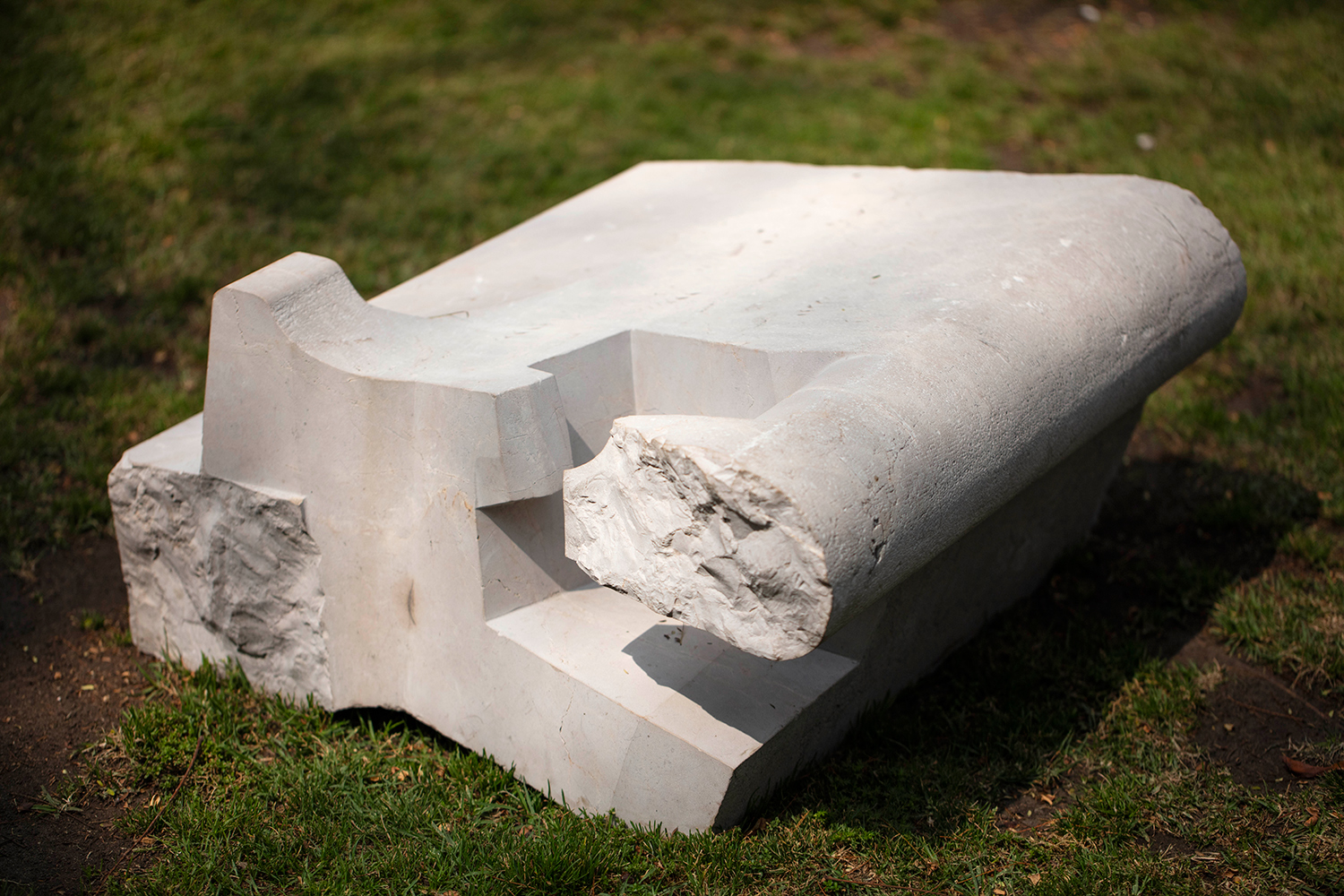
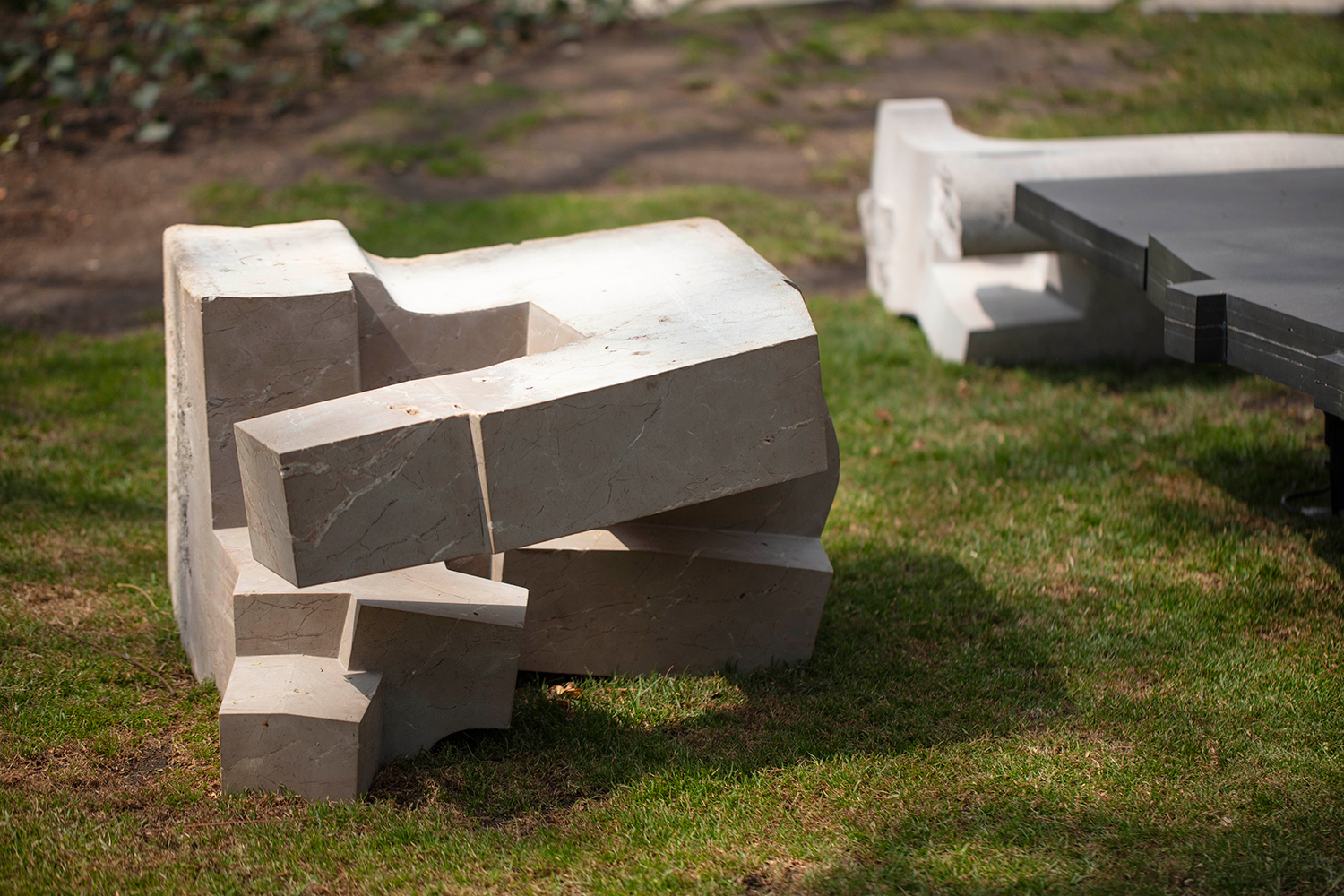
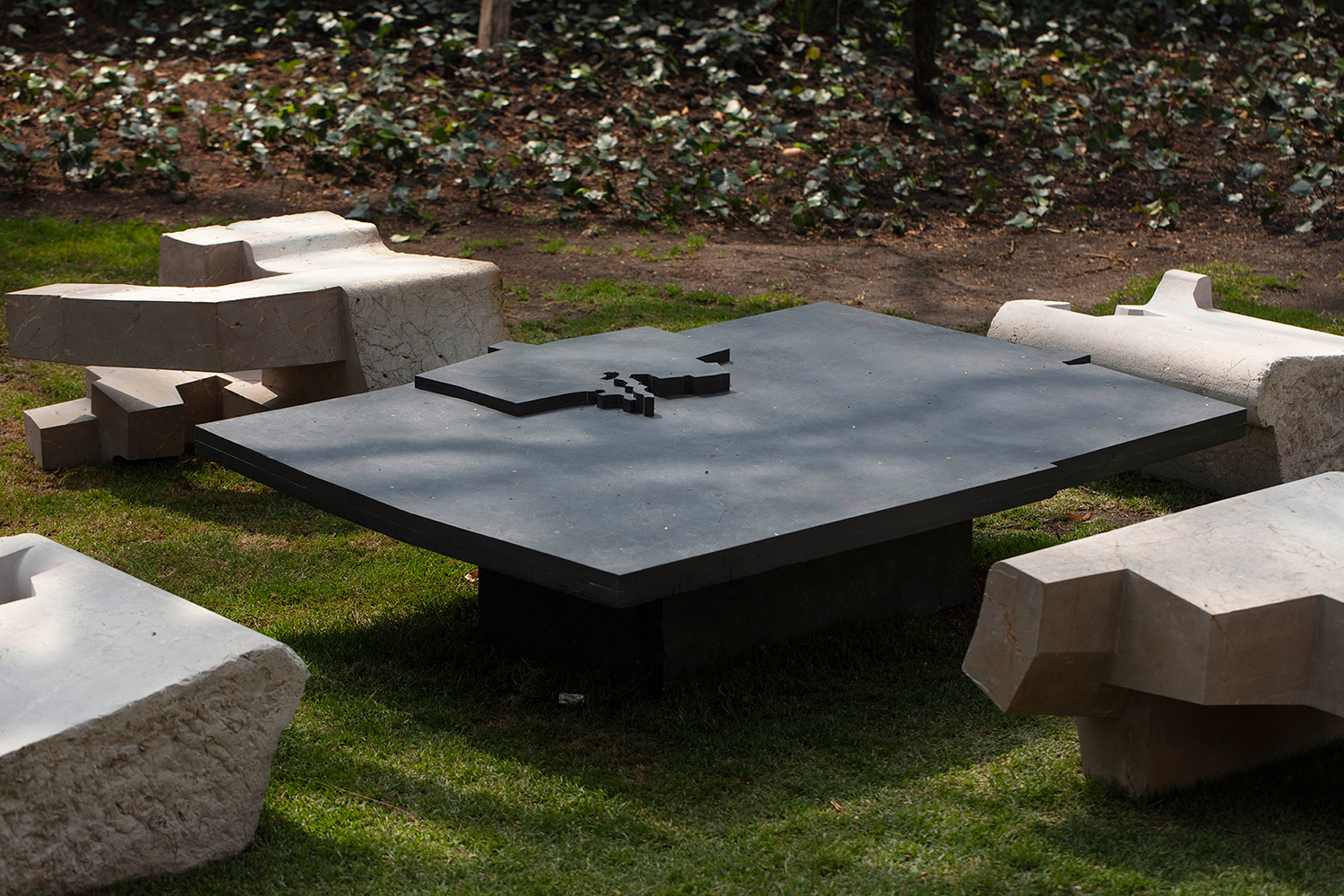
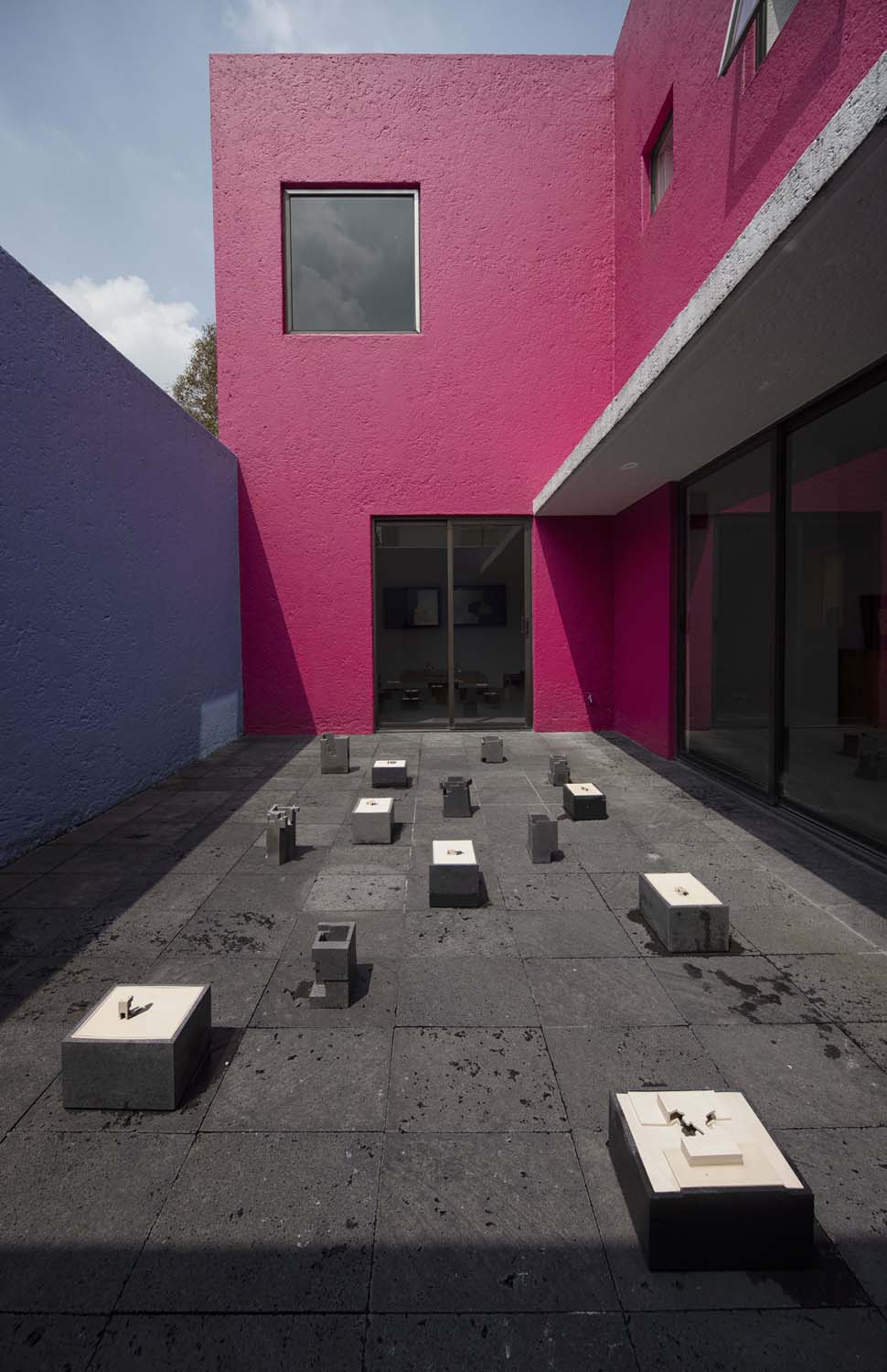
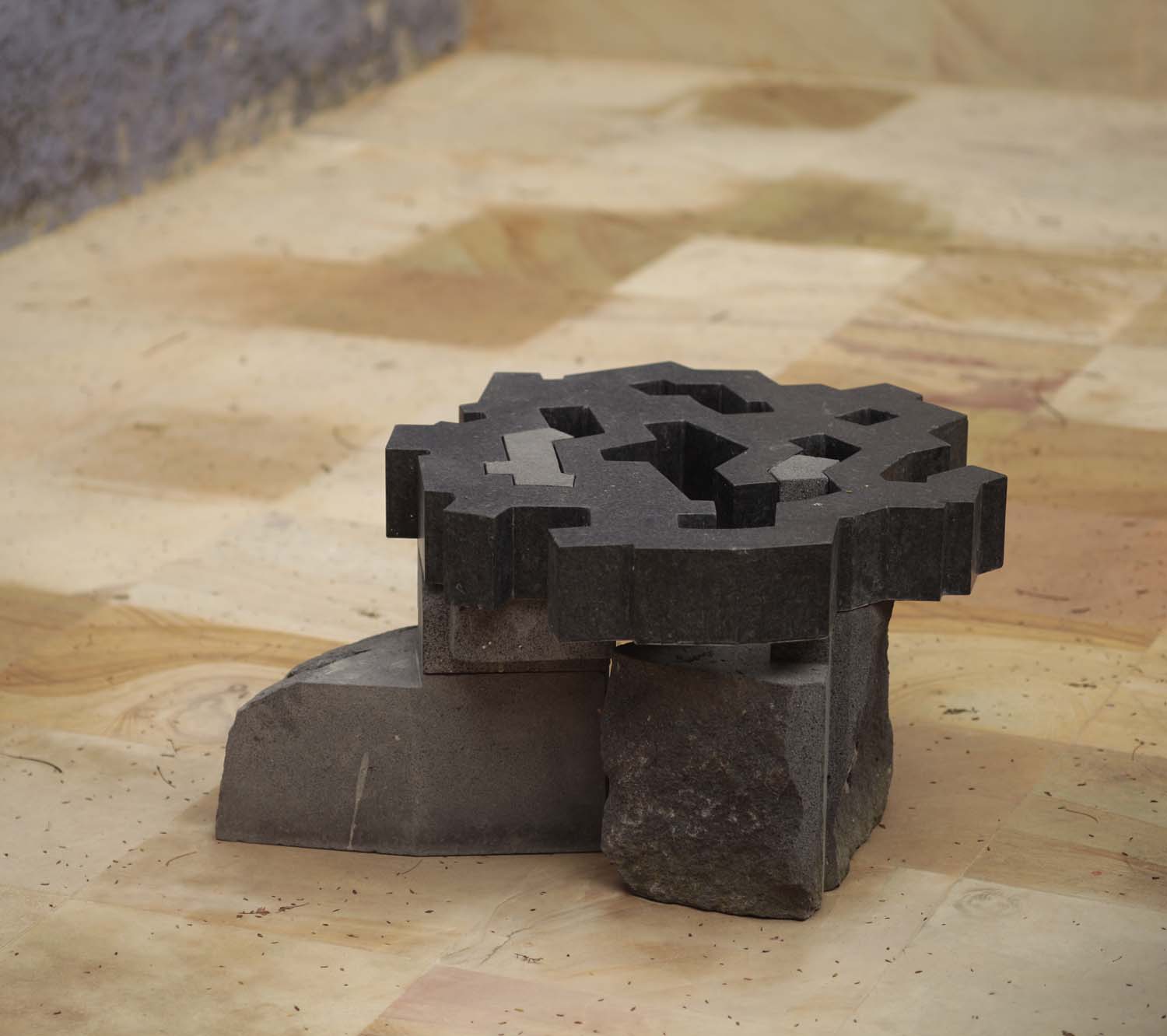
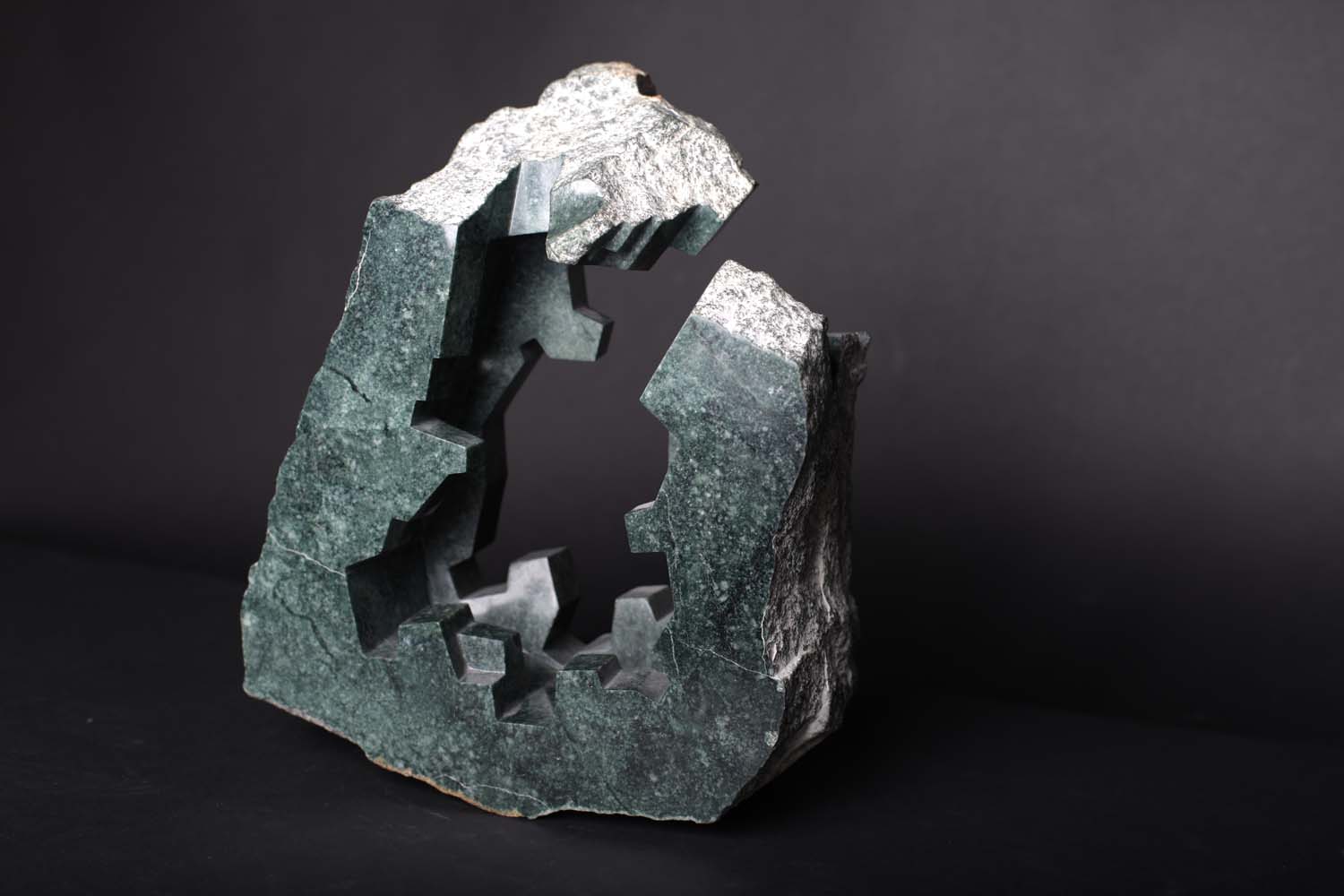
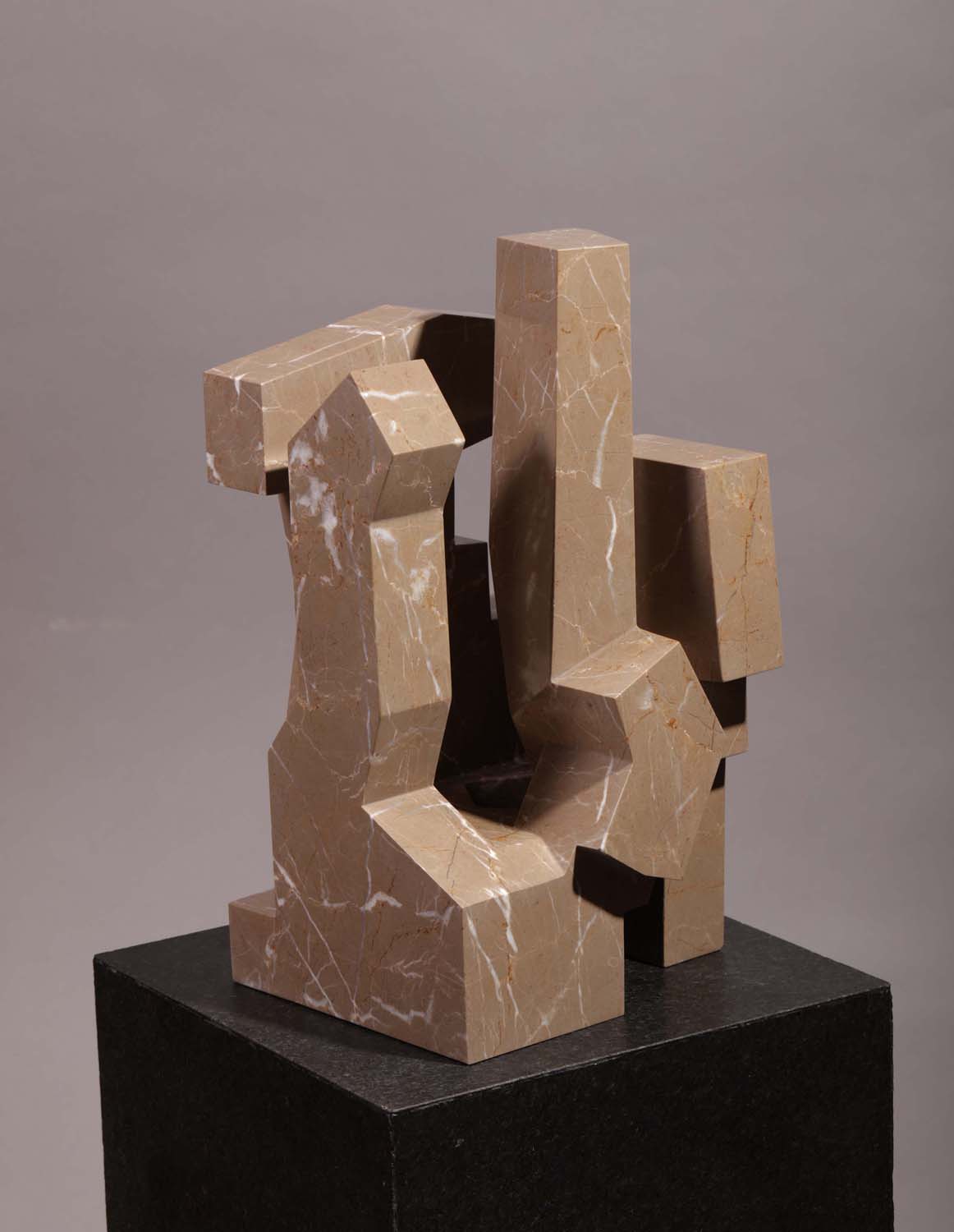
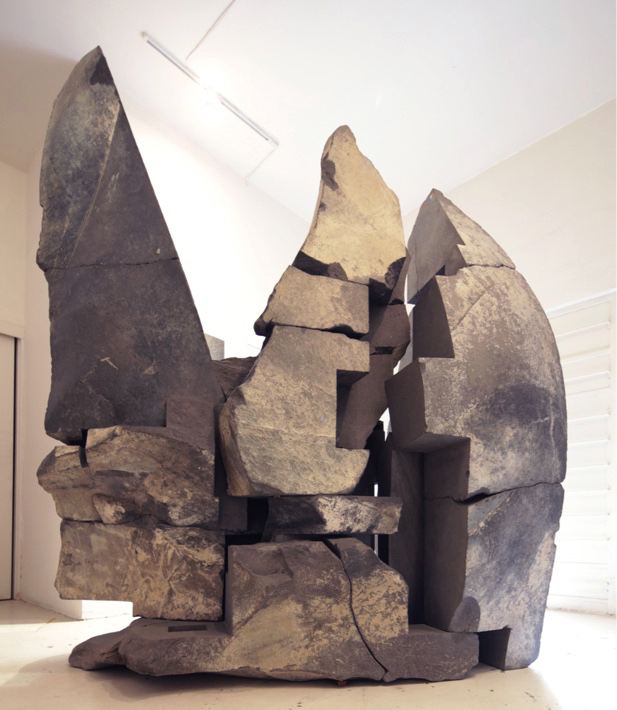
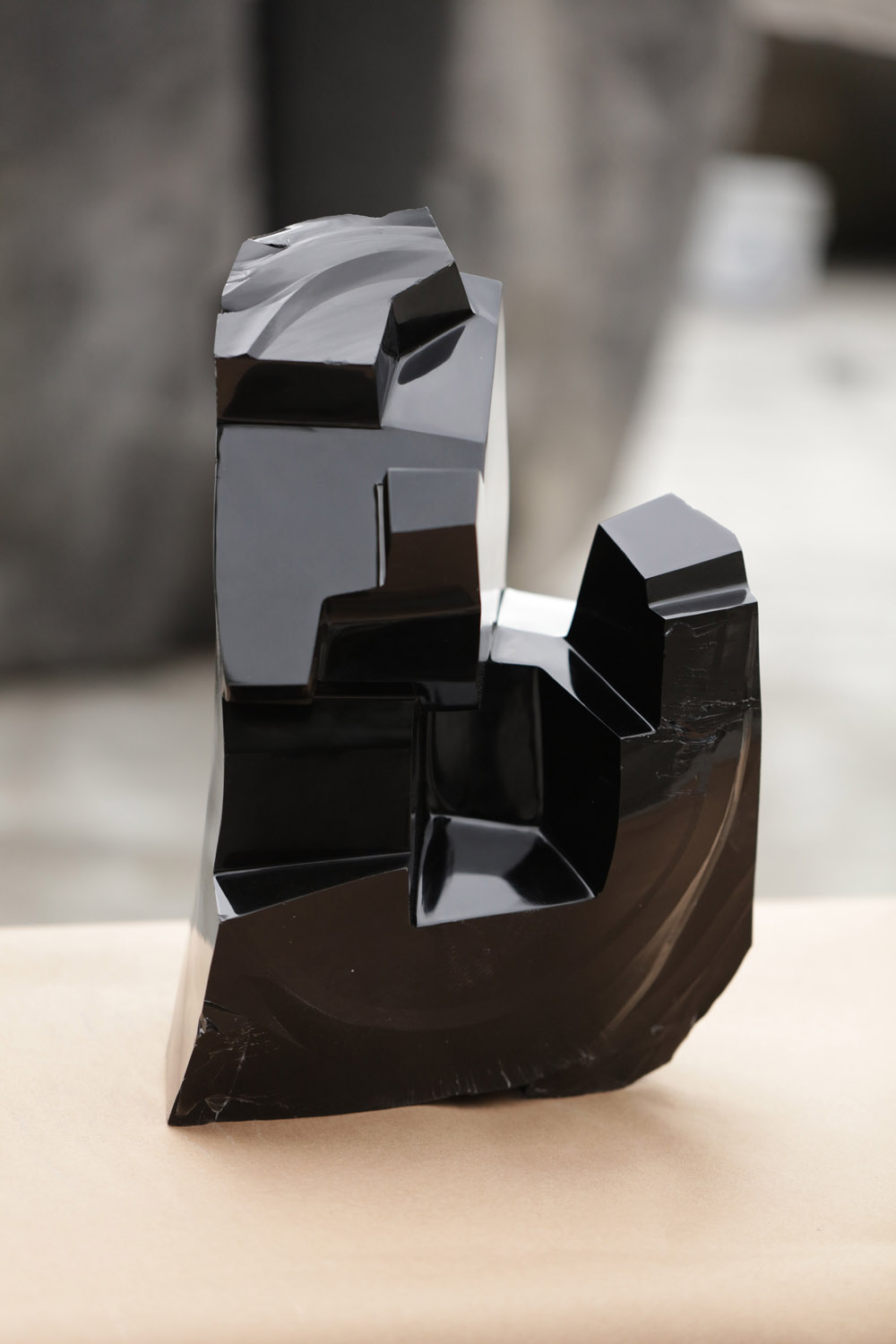
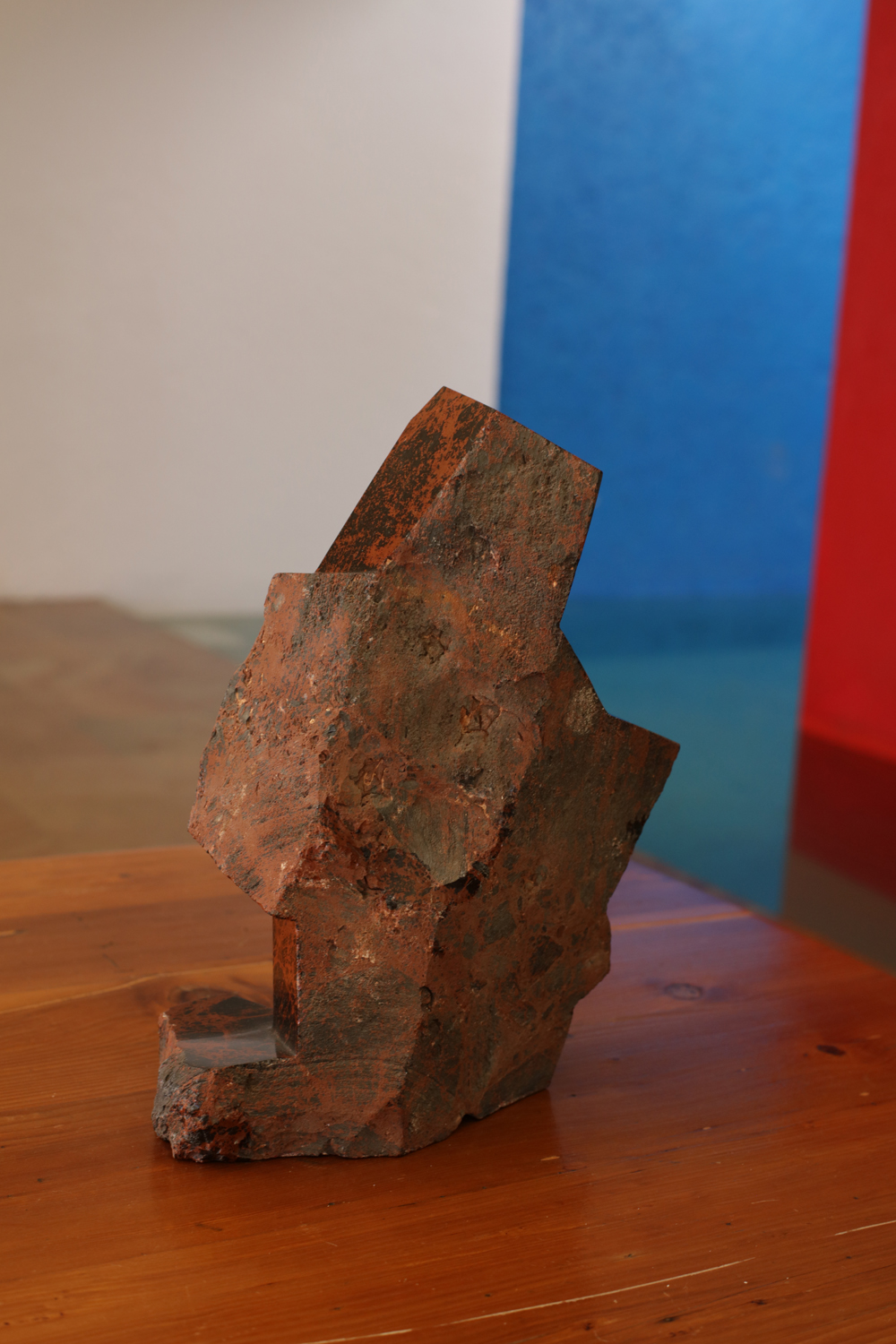
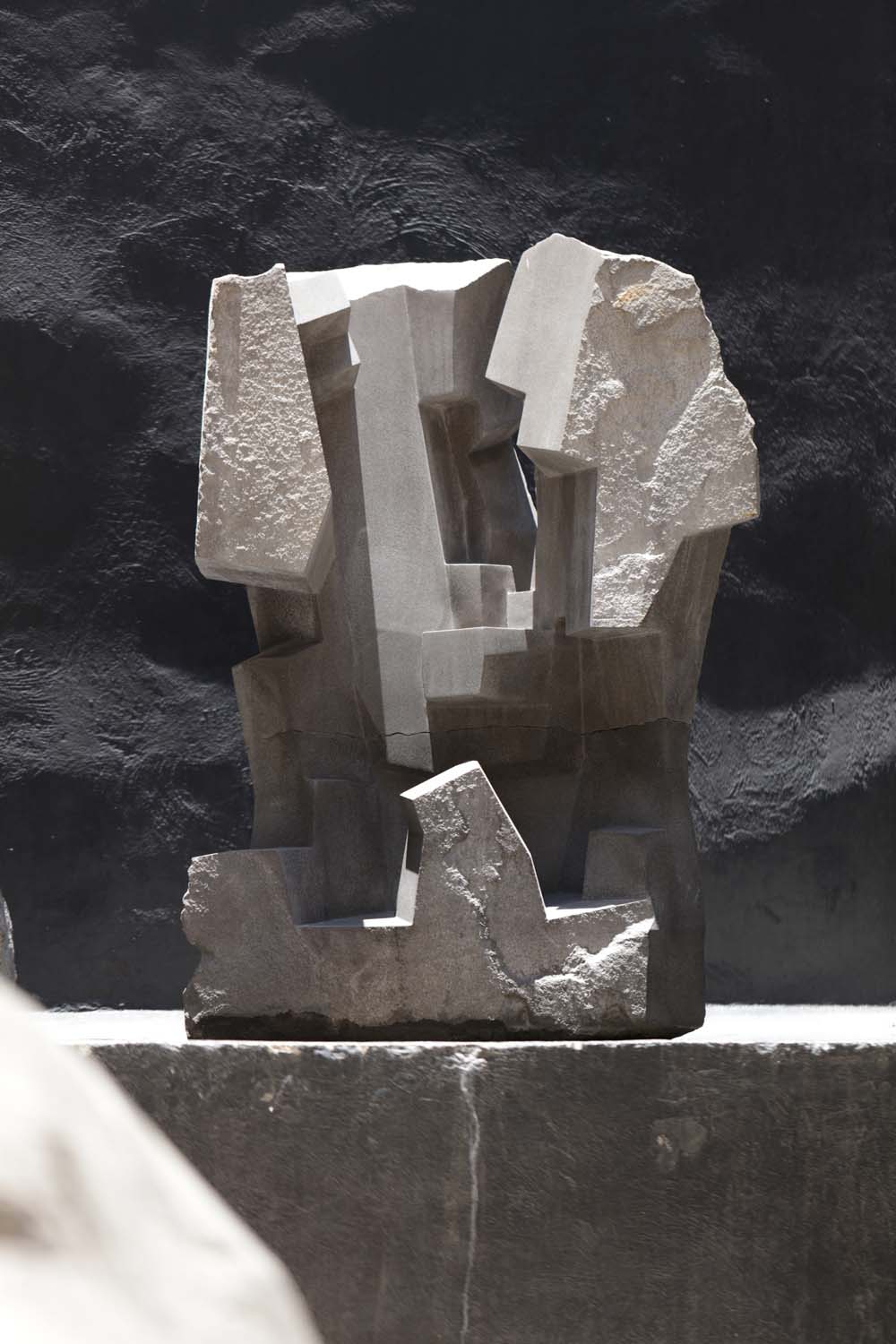
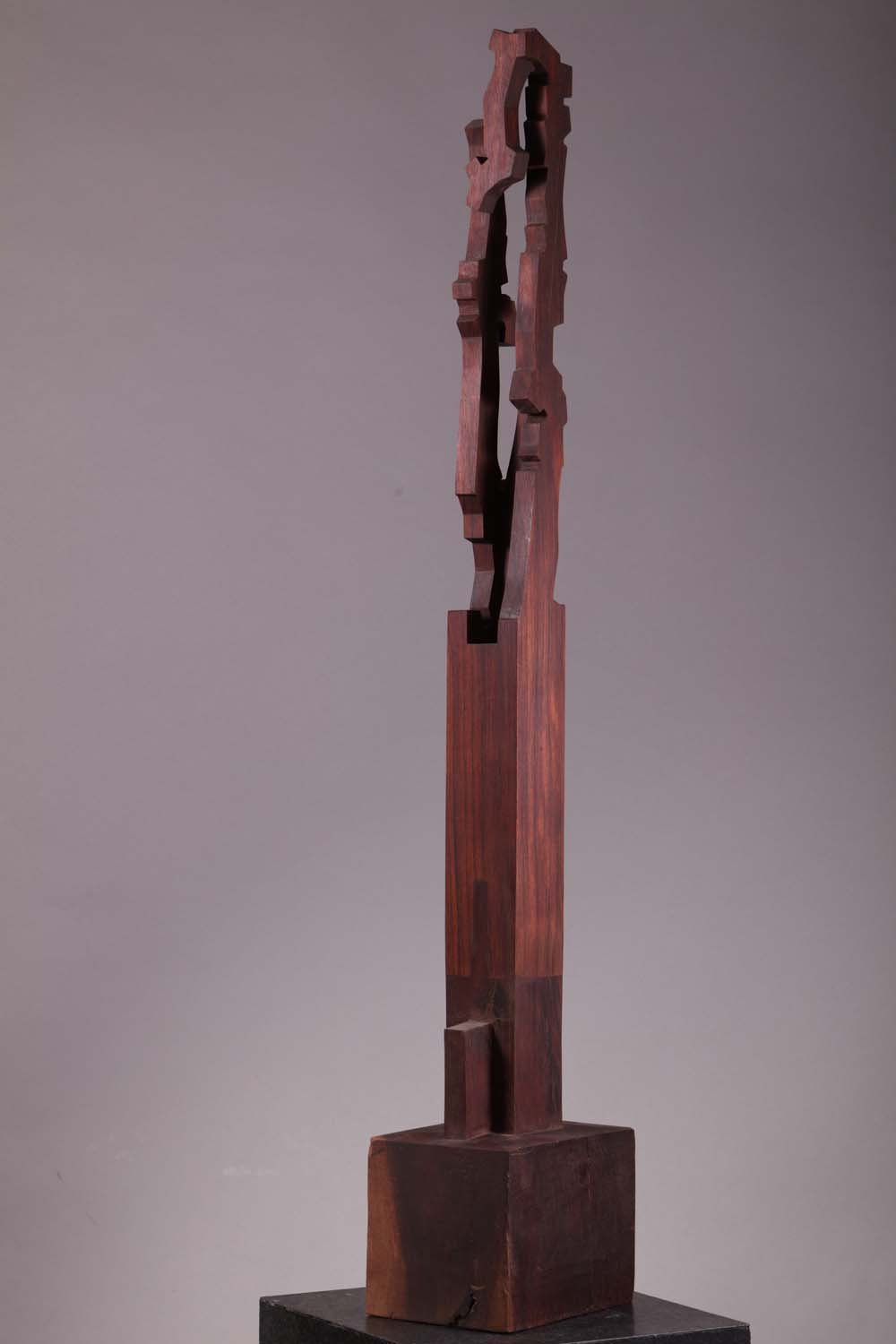
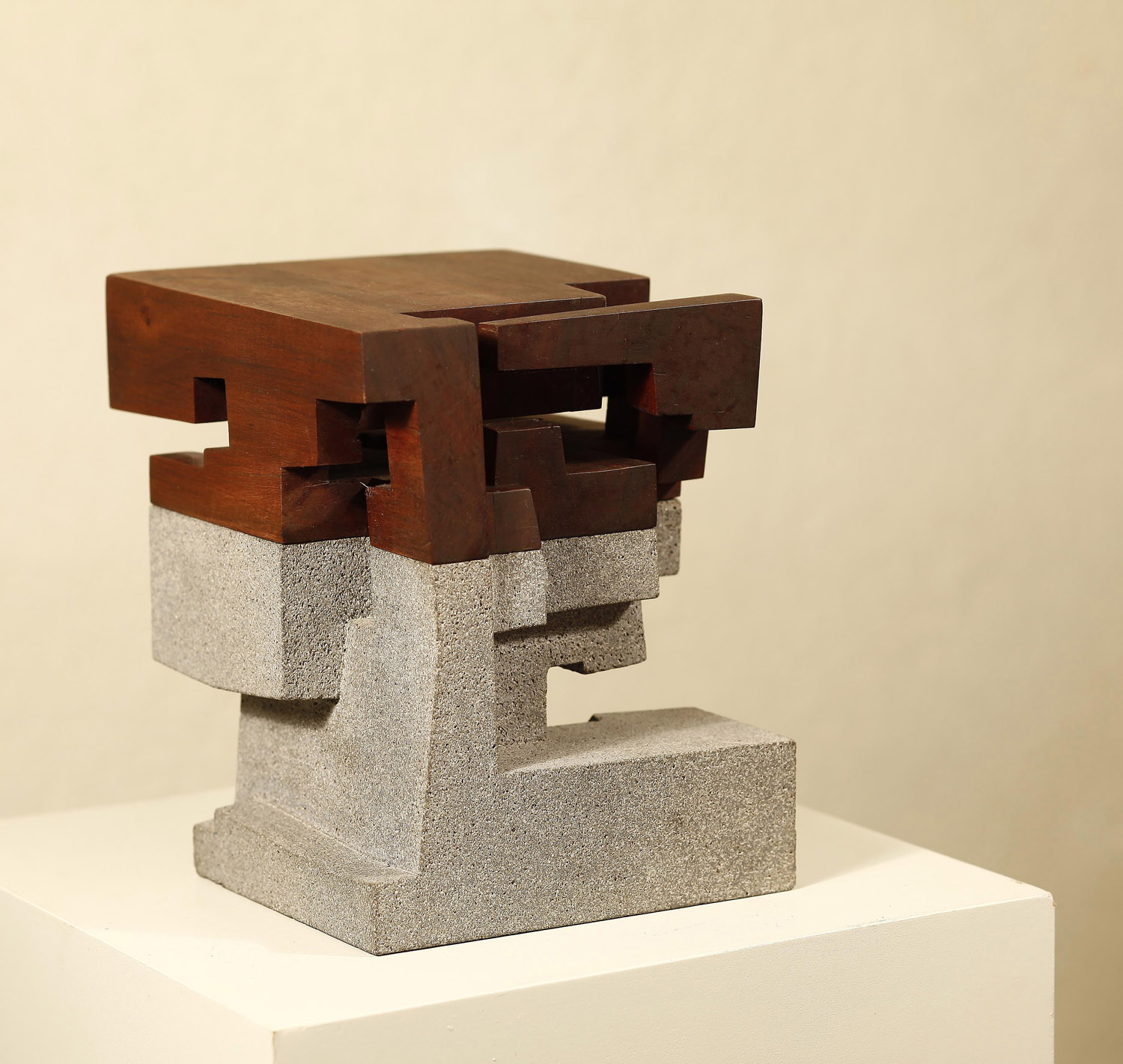
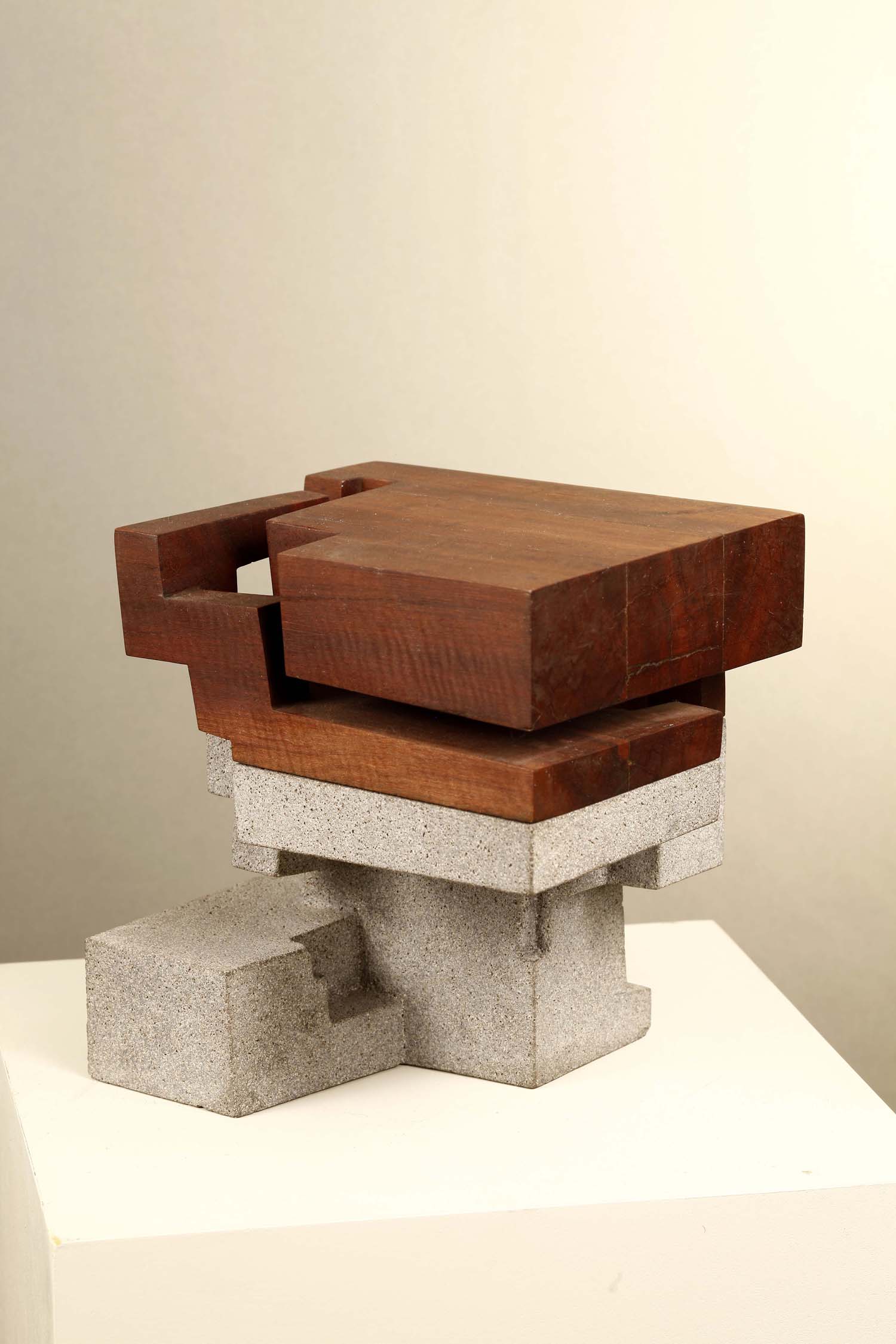
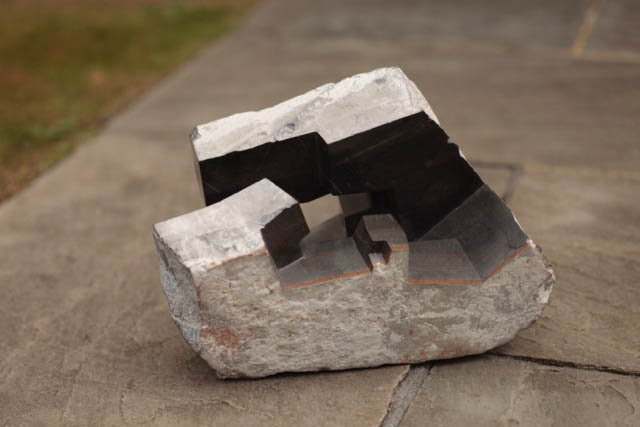

To see more sculpture works and get the details click here into the images and/or visit the SCULPTURE page
CERAMIC SCULPTURES
SCULPTURAL JEWELLERY SERIES - glass, steel, jade and wood
This is a series of rings from a small body of work by the artist Jorge Yázpik, conveyed as sculptural jewellery, created in 2014 and 2015. All the pieces are hand-carved in a direct caving process using the materials Glass, Jade, Steel, Silver and Wood. The glass is provided from renowned mexican glass manufacturer Nouvel Studio, famous for its high quality colour glass and its crystal-like glass.
To get details for the pieces please go to the JEWELLERY page
EXHIBITION TEXT, UNIVERSITY OF TEXAS, SAN ANTONIO
by Gabriella Boschi Scott, M. A.
In over three decades of artistic creation, Mexican sculptor Jorge Yázpik has challenged many of the elements that have become hallmarks of abstract sculpture. With works that can present themselves on walls, tabletops or floors, in vertical or horizontal positions (depending on the whim of the artist or the exigencies of the space), and in public works that rest casually on the ground as if they were native to their setting, Yázpik's trajectory has stitched the seam between geometric abstraction and post- minimalism. His works adapt to a versatile use of space and functionality while maintaining an essential individuality. In different scales, the benches constructed as public works for installation in Mexico City's Centro Histórico and the rings he creates in wood, metal, crystal and semi-precious stones, annul the distance between viewer and object, work of art and furniture, personal adornment or performative tool, becoming the "malleable objects"of contemporary post-conceptual art.
Mentored by Mexican Ruptura artist Manuel Felgurez, one of the pioneers of Mexican Geometrism, Yázpik also acknowledges the influential Mexican artists Gunther Gerzso and Vicente Rojo, while his treatment of negative spaces advances a discourse introduced by Basque sculptors Eduardo Chillida and Jorge Oteiza, Catalan sculptor Julio González and Uruguayan artists Joaquin Torres Garcia and Gonzalo Fonseca. Moreover, Yázpik revisits in a contemporary key the radiance and solemnity of Pre-Columbian sculpture, recovering a volumetric and spatial language whose expressive and conceptual vigor was hindered by centuries of Spanish Colonial rule, with the restriction of sculpture to religious representations. Central to Yázpik's oeuvre is an approach to materials that focuses on reverence for their natural qualities, on keen observation, and on a negotiation with the limits they impose. His work is often carried out by taille directe, without models, particularly when working with stone.
INSTALLATION of WOOD stele sculptures
This respect for the medium is often expressed as a subtle subversion, to uncover the material's internal paradox : crystal is subjected to lapidary tooling, like a precious stone, to achieve a more organic, prismatic and elemental appearance than traditional manufacture can produce jade and obsidian are presented in their unpolished majesty, revealing their crystalline luster only through carefully placed internal cuts ; wood is ’petrified' into steles ; volcanic stone is often surgically deconstructed and reconstructed, preserving its original shape but now unveiling its gravitational burden. Every encounter with the material is approached by Yázpik, in his own words, by ”clearing a path," making great allowances for the fortuitous and accidental element. In the process of "vitalising"natural materials as prima materia, the artist negotiates cuts and carvings in the medium's own native language, in an interplay which is both instinctual and intellectual.
Yázpik’s stone sculptures reflect upon the legacy of ancient art and architecture, particularly Pre-Columbian Atlantean megaliths, stone artifacts and emblematic architectural reliefs, with their focus on native materials and sacred geometries, their hermetic silences and enigmatic graphic expressiveness. The artist Ands additional inspiration in the intricate and meditative spaces and abstract forms of Islamic architecture and the asceticism of Japanese wab-sabi aesthetics, while acknowledging the enduring legacy of Western Classical art by anchoring his work in the proportions of the Golden Ratio.
Yázpik’s labyrinthine negative spaces, with their precisely incised geometrical surfaces, contrast the organic outer contours of stone, pointing to an integration of opposites. They speak of the coexistence of duality in unity : duality of the organic and inorganic whenever our tactile sense is called upon to explore contradistinctive textures duality in the contrast between a monolithic concentration and a receptive, concave morphology unity in the compact defiance of space and eschewal of symbolic systems nd cosmological schemes. Representing nothing but themselves, liberated from Yázpik's works stand autonomously from mental constructs and enter the
recognisable icons to convey formal qualities, the artist employs a non-symbolic language made of visual elements and spatial proportions-a language that precedes words and images to speak to the viewer of mental architectures, homeostasis and immanence, as a repository of sacred knowledge, a memorial to trans-historical time lost in the folds of our collective memory.
Through an exchange between the material's idiosyncrasy and his own rigorously abstract lexicon, Yázpik engages the viewer visually, tactually, spatially and architecturally. His site-specific works merge diverse elements of light, water, vegetation and surrounding structures. Monumentality, however, is not exclusive of the artist's large-scale works regard- less of dimensions, all of his sculptures demand direct engagement with their environment, in which they abide as an imperturbable presence, juxtaposing and containing movement and stillness, corporeality and nothingness, origin and destination.
Yázpik's work has been featured internationally in solo and collective exhibitions, including the Museo Soumaya, Museo de Arte Moderno, Museo Rufino Tamayo, Museo Diego Rivera (Anahuacalli) and Casa Barragán in Mexico City, the Museo de Arte Moderno in Cali, Colombia, the Museo Nacional de Bellas Artes in Montevideo, Uruguay, the Petit Palais in Paris, the 2000 Expo Hannover, Germany and the 2015 Expo Milano, Italy.
This exhibition is a best attempt at presenting to the U. S. public the breadth and diversity of Yázpik's work across a variety of media.
Gabriella Boschi Scott, M. A.
UNIVERSITY OF TEXAS SAN ANTONIO
JADE RING
the beauty of a subtle investigation into one of the hardest stones to carve.
Short EssaY
BY Dr. Scott A. Sherer, Ph. D.
Fundamental characteristics of historical experiences and discourses circulate through Jorge Yázpik's sculptural practice. In a wide range of materials and in dimensions from the relatively small scale of rings (some wearable, others just implying the presence of the hand), totems rising from floors or on pedestals, and to monoliths transforming public spaces, Yázpik's works carry the history of the artist's actions and the mysteries that extend beyond everyday experience. His works present inextricable relationships between phenomenological experiences and discourses of art history and the opportunities and fractures they provoke.
As composed by Yázpik, stone, crystal, metal, wood, carbon, and even paper present themselves in new contexts while they also maintain the elemental character of their origins. Yázpik composes with line, form, shape, and the interplay of solid mass and open volume. Sculptural works and designs for architectural demonstrate Yázpik's interest in-the Possibilities of exchange among the artist, created works, and a range of viewers. Yázpik's objects are vehicles that gain force relative to viewers. Diverse trajectories of abstraction, minimalism, and environmental art provide critical perspective for how his individual works, while unique within their own dimensions and idiosyncratic histories, have profound resonance in their extension beyond the limitations of their frames, pedestals, and surveyed locations. Subtle play with color and shadow seduces the eye and body to travel and probe the legacies wrought by artistic enterprise.
Most of Yazpik's works remain untitled in order to avoid unproductive connotations. However, his endeavours suggest provocative study and critique of significant issues in contemporary art. Indeed, as the Postmodern period demands an active awareness and questioning of cultural discourses, Yázpik stimulates consideration of contemporary art and experience as new invention in conversation with a range of broader associations.
The visual culture of Mexico incorporates the histories of the plurality of pre-Hispanic cultures, colonial rupture and exchange, and the modern state into the twenty first century. Indigenous cultural heritage survives as a foundation among a range of global influences. Yázpik's work functions amid discussions and debates regarding the universal impulses of individual creative experiment as well as consideration of the influence of European and U. S. art and architecture in the national context. His works evoke the monumentality of ancient forms, reference the aesthetic and social ideals of international styles and movements, and insist upon the presence of engagement extending from the artist’s eye, hand, and mind to others.
Text by Dr. Scott A. Sherer, Ph. D.
BIO/CV - JORGE YÁZPIK (born México City, 1955)
2020
- Proyecto H Contemporáneo, gallery, Guadalajara, Mexico
2018
- Casa Gilardi, Mexico City
- Marion Friedmann Gallery, London
- Zaha Hadid Gallery, London
2017
- Museo de Arte e Historia de Guanajuato
- Museo Fernando García Ponce-MACAY
2016
- Centro Cultural Santo Domingo. Oaxaca, Mex.
- FES Acatlán, UNAM
- Galería del Seminario de Cultura Mexicana, Ciudad de México.
- IPN.Zacatenco. C de México
2015.
- Galería José Luis Benlliure, Facultad de Arquitectura. UNAM
- Museo estudio Diego Ribera Anahuacalli. Ciudad de México
2014
- Museo Macay, Yucatan. Fernando Garcia Ponce
- Casa Guilardi México City, D.F.
2010
- Museo Regional, Guadalajara, Jalisco
- Palacio de la Autonomía, Ciudad de México
2009
- Centro Cultural Clavijero, Morelia, Michoacán
- Universidad Iberoamericana, Ciudad de México
2008
- Casa Barragán, México DF.
- Museo Nacional de Antropología, México DF.
2006
- Museo Federico Silva, San Luis Potosí.
2005
- Palacio de la Autonomía, UNAM, DF.
2004
- Museo Macay, Yucatan
- Facultad de Arquitectura, galería José Luis Benlliure, Campus UNAM, DF.
2003
- Museo de Zapopan, Jalisco.
2001
- TEC de Monterrey, Campus Estado de México.
- Galería Jalapa, Jalapa, Veracruz.
2000
- Centro Cultural Mexicano, Paris, France
1999
- Homenaje a José Luis Borges, Festival Internacional Cervantino, Guanajuato.
- Instituto Mora, México DF.
1998
- Galería del Sur, UAM, México DF.
- Museo de Arte Contemporáneo, Aguascalientes.
1997
- Voces de la materia, Centro Cultural Jardín Borda, Cuernavaca, Mor.
- Museo de Arte Contemporáneo de Oaxaca, Oax.
- Museo Soumaya, México, DF.
- Museo de Arte Moderno, México, DF.
- Museo Rufino Tamayo, México, DF.
1996
- Montañas hondonadas plataformas, galería UAM
- Centro Cultural Jardín Borda, Cuernavaca, Morelos
1995
- Centro Cultural Coahuilense, Saltillo, Coah.
1994
- Museo de Monterrey, N.L.
- Museo Biblioteca Pape, Monclova, Coah.
1993
- Galería del ITAM, México, DF.
1991
- Centro Cultural Jardín Borda, Cuernavaca, Mor.
